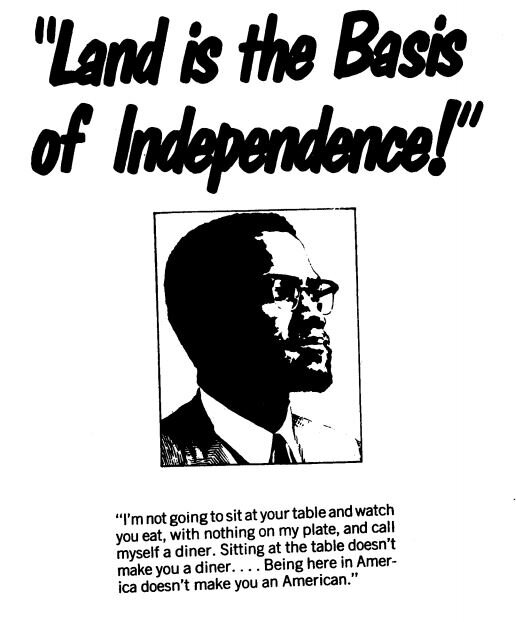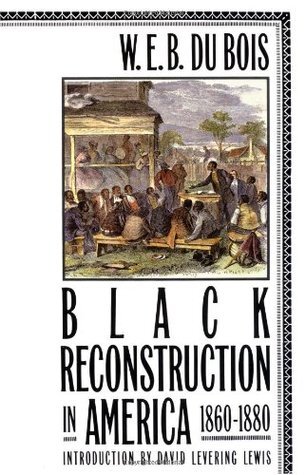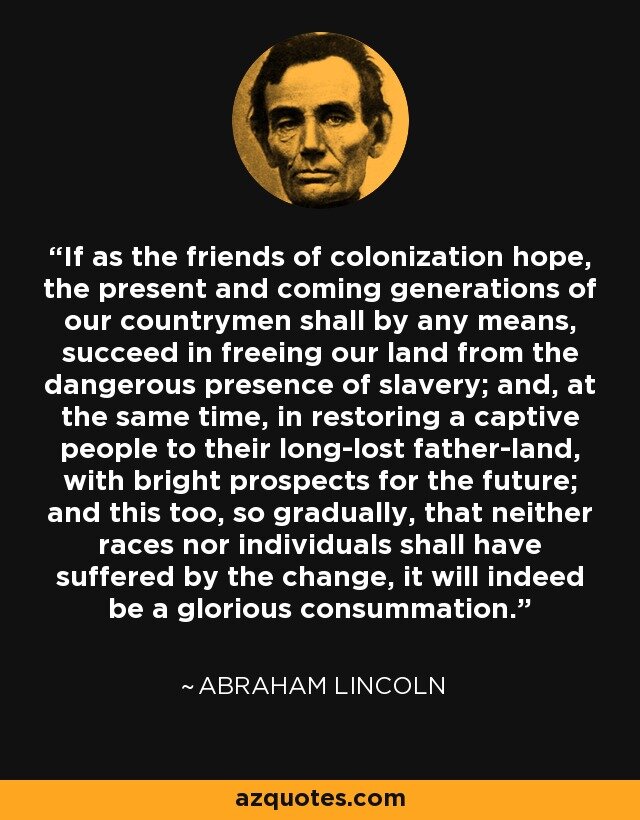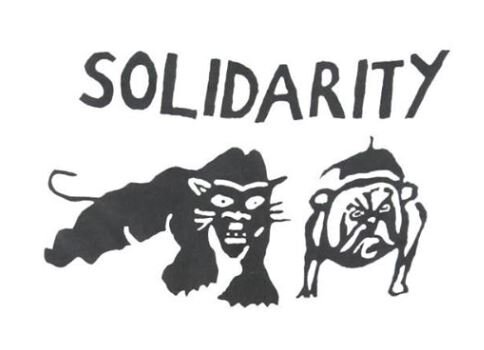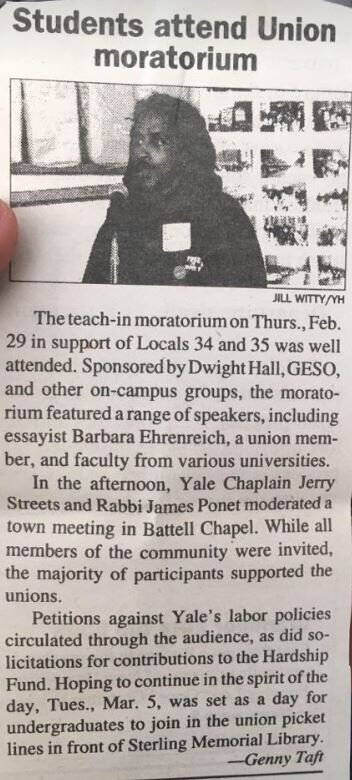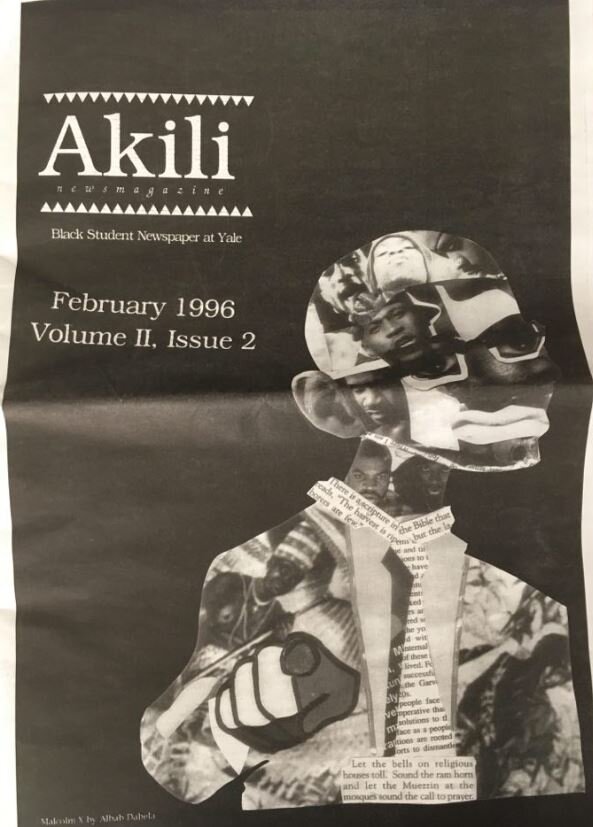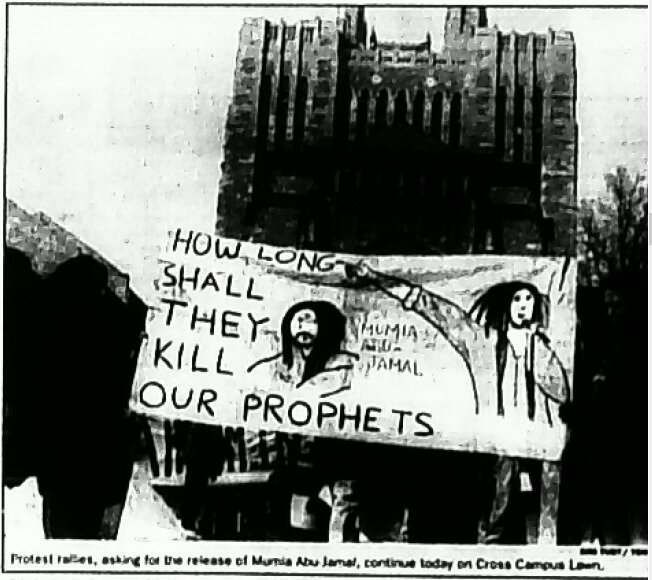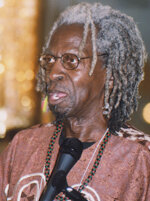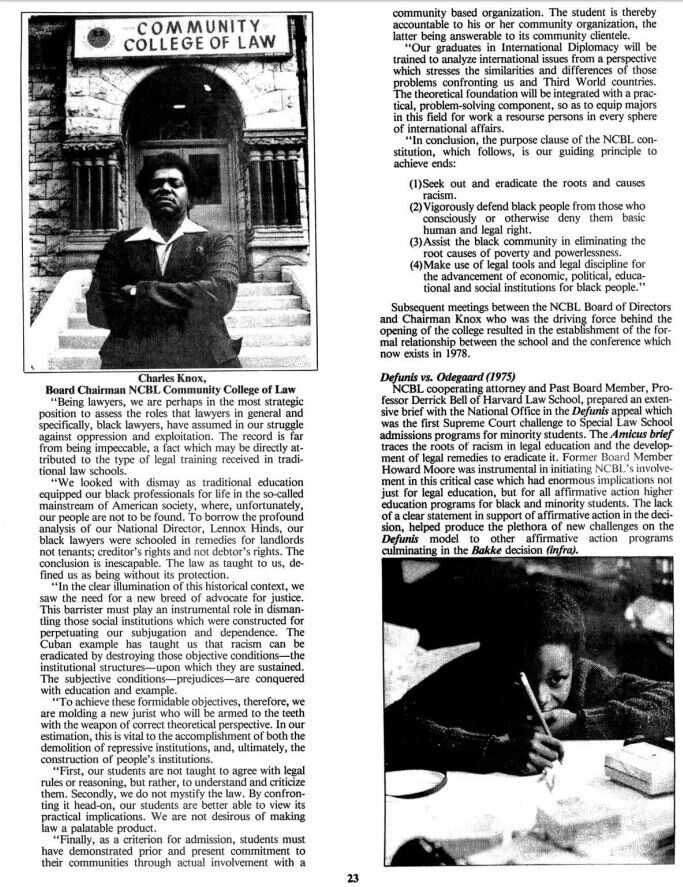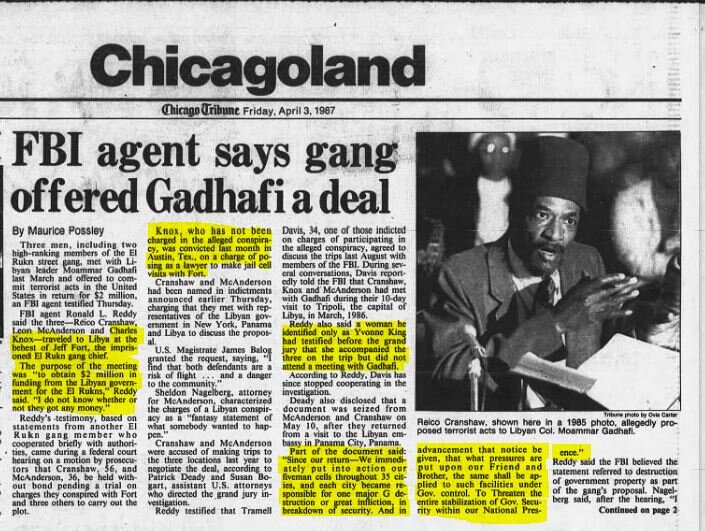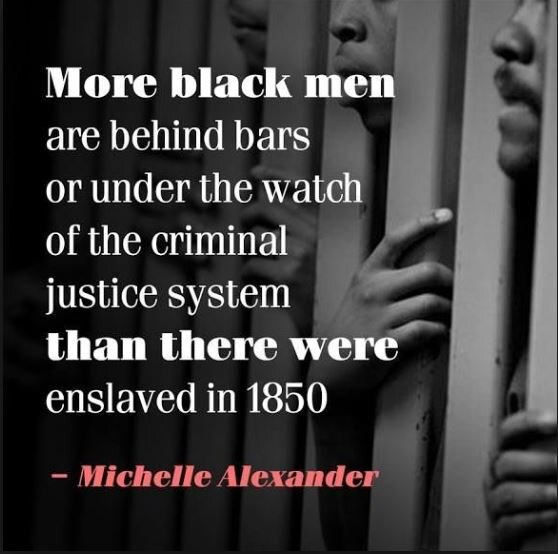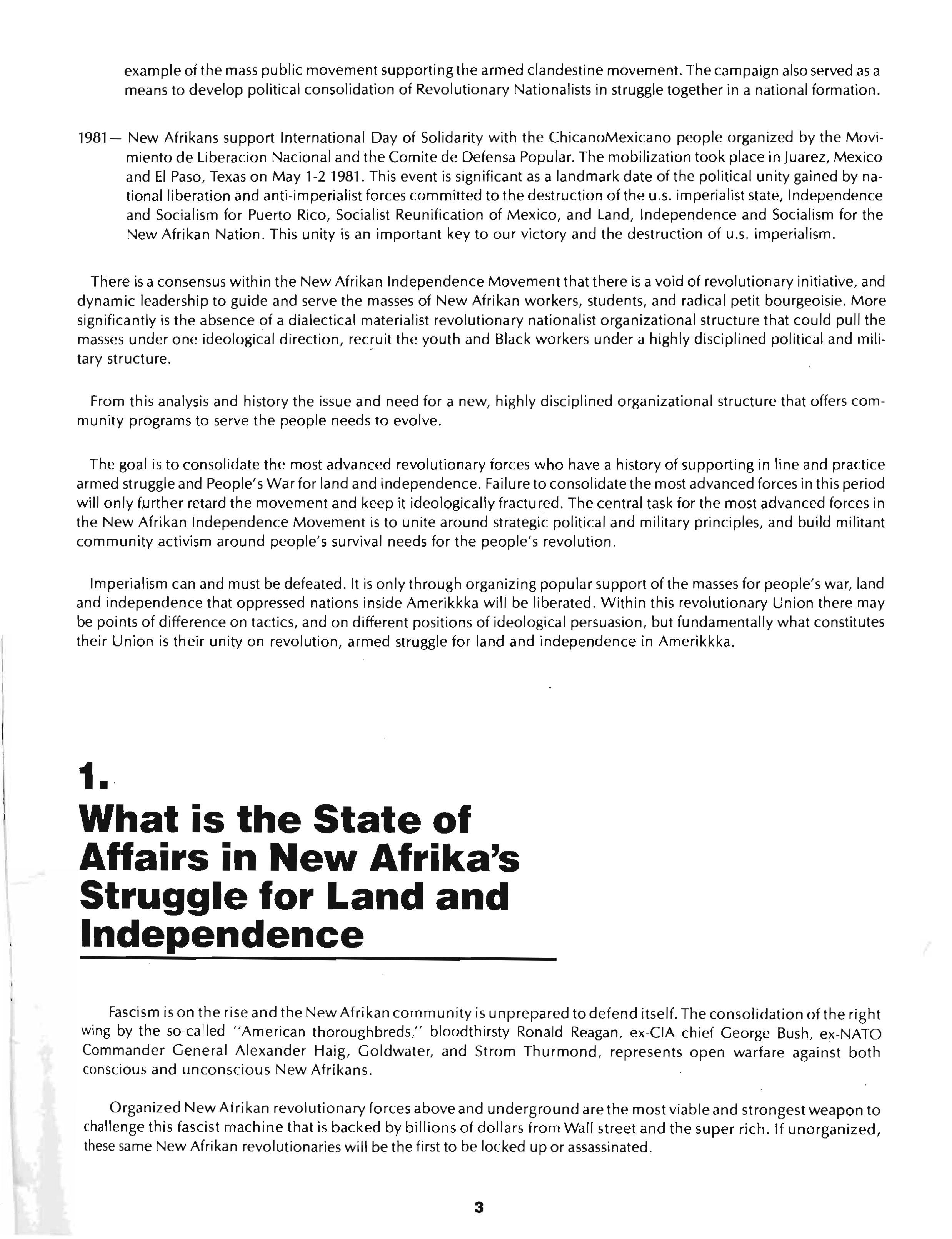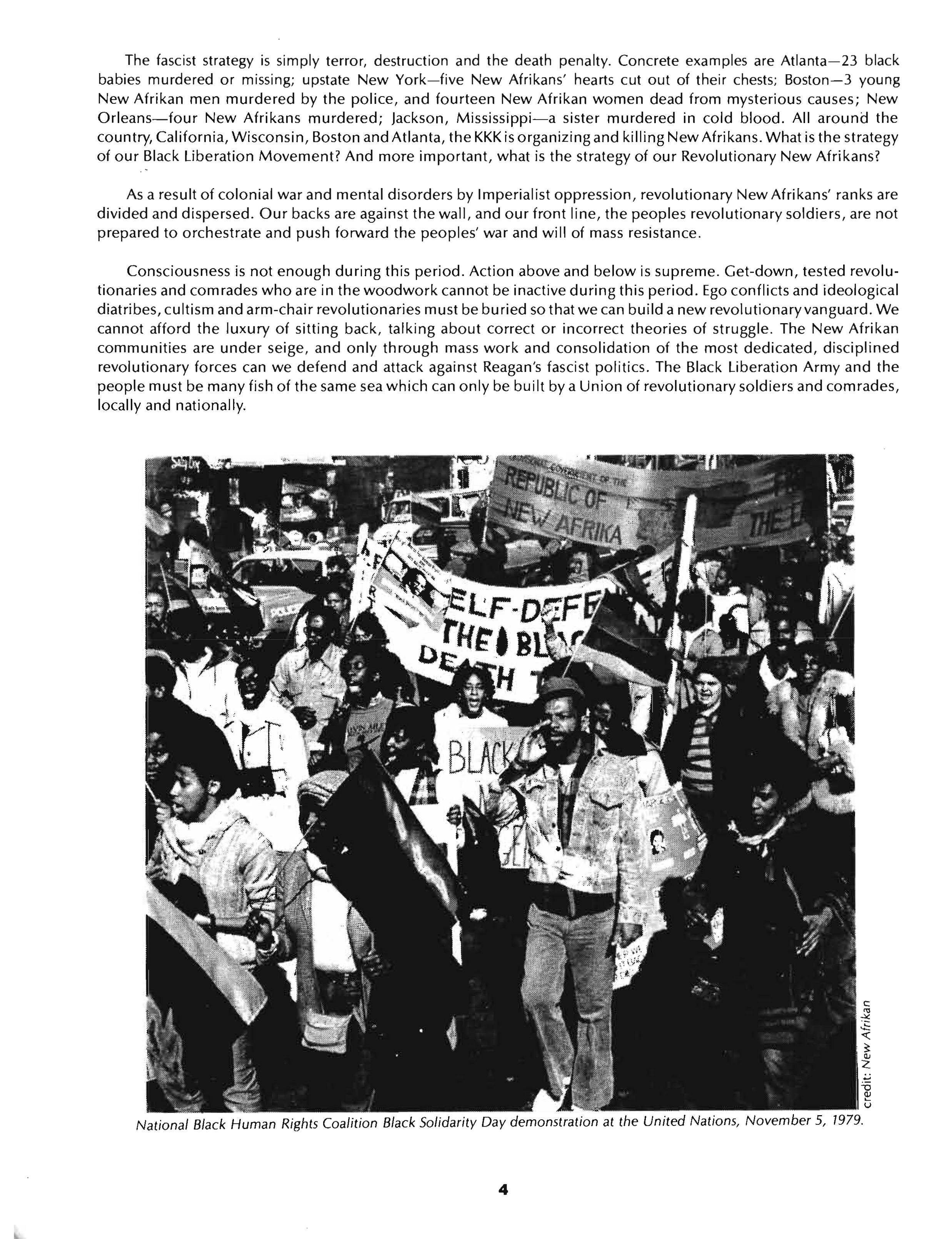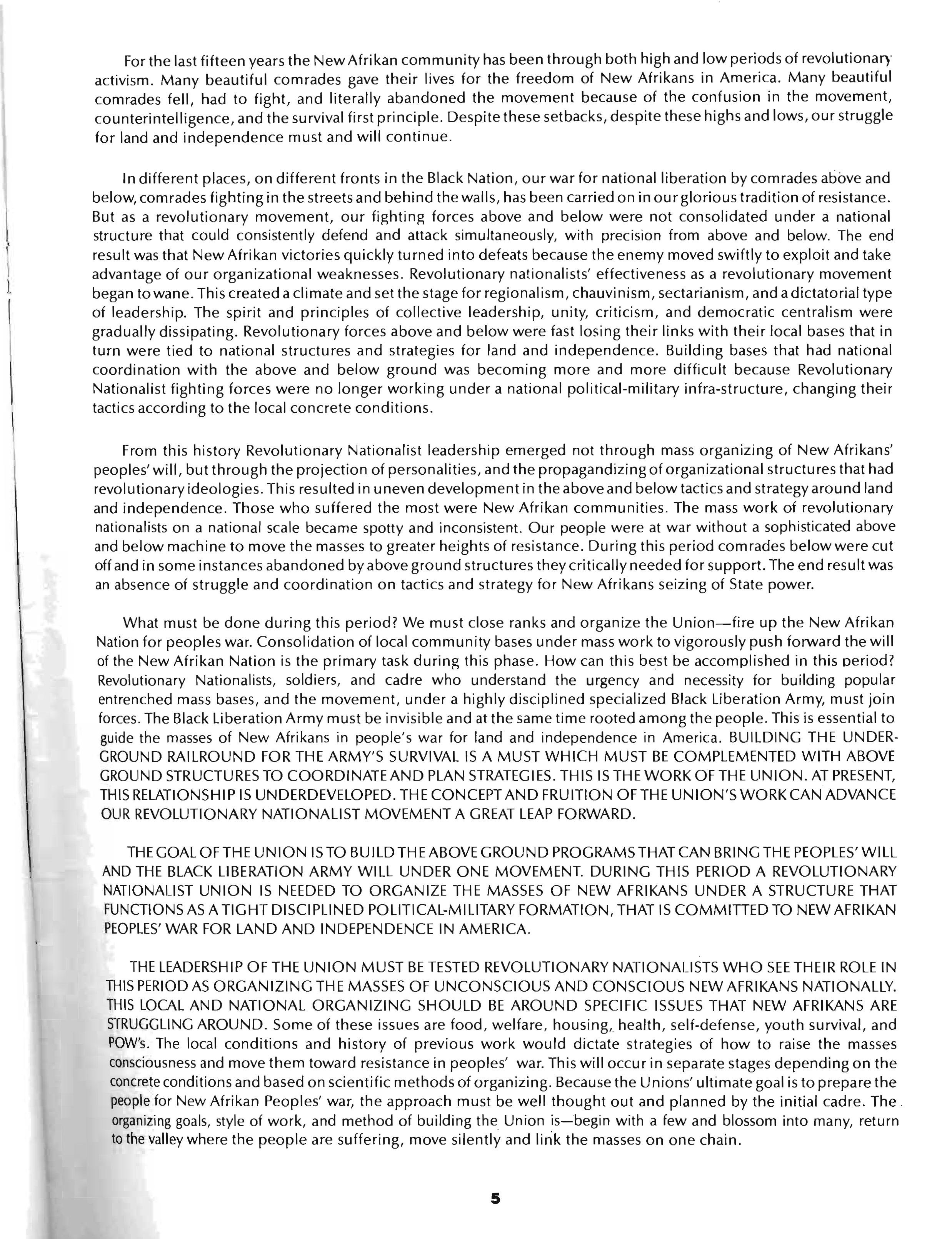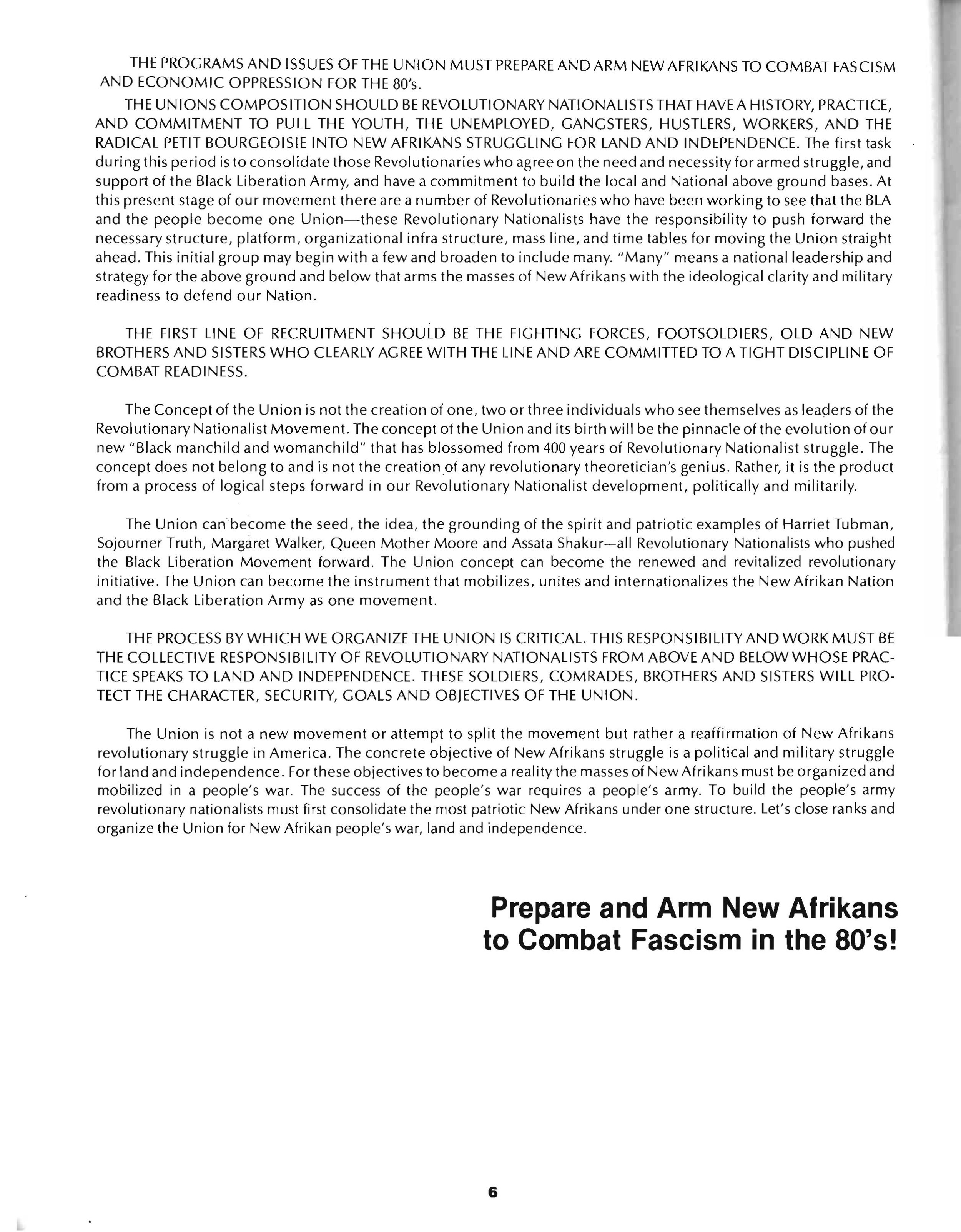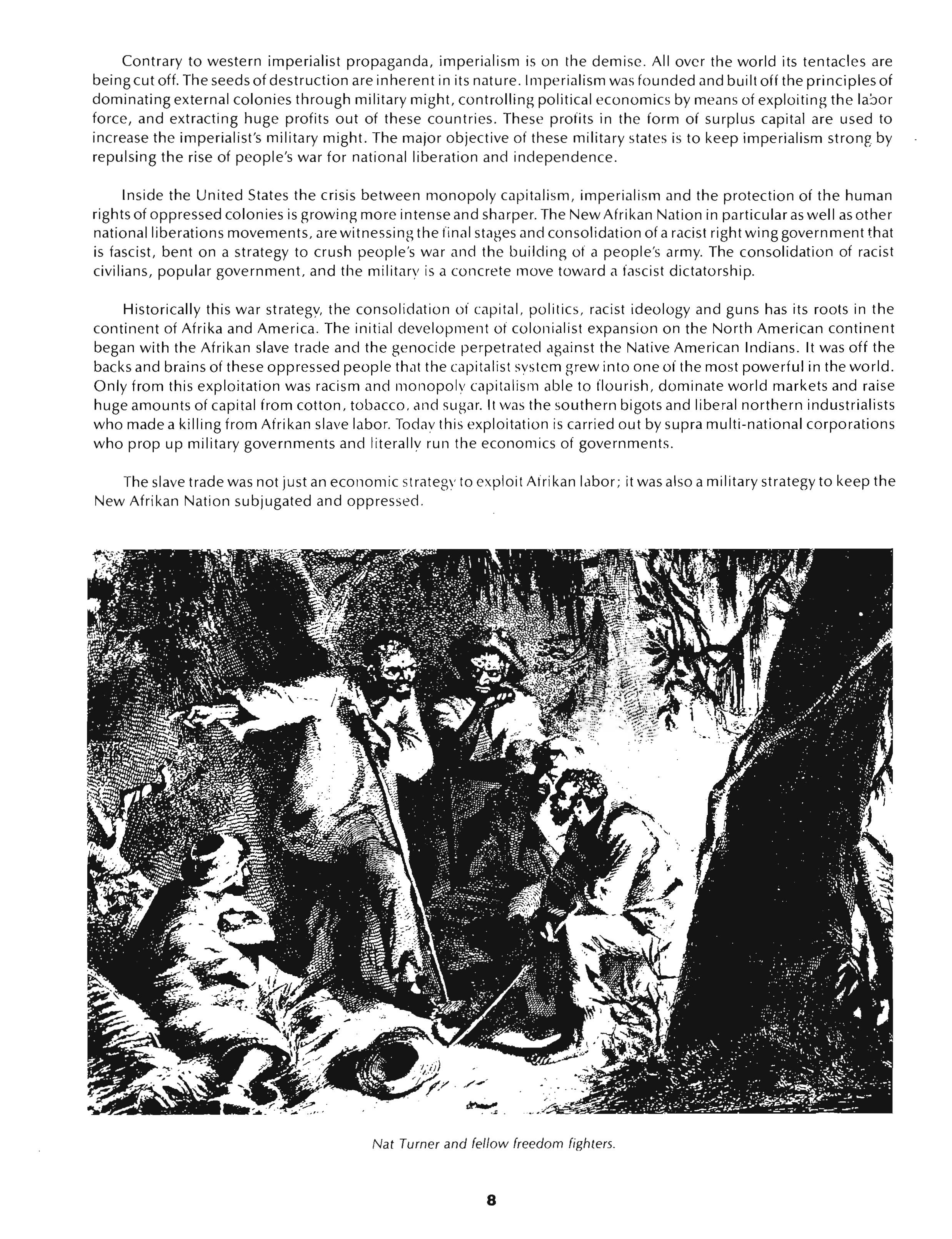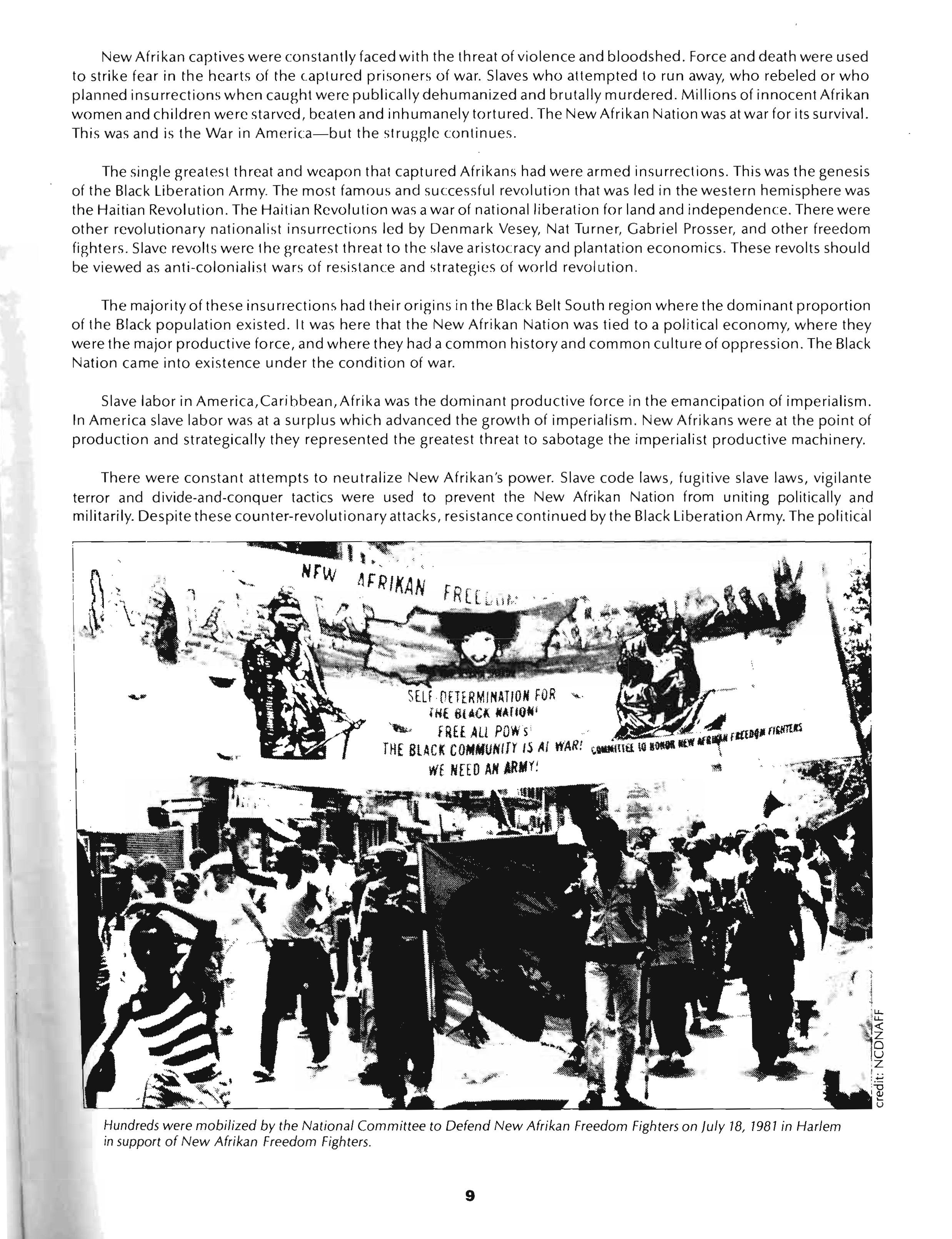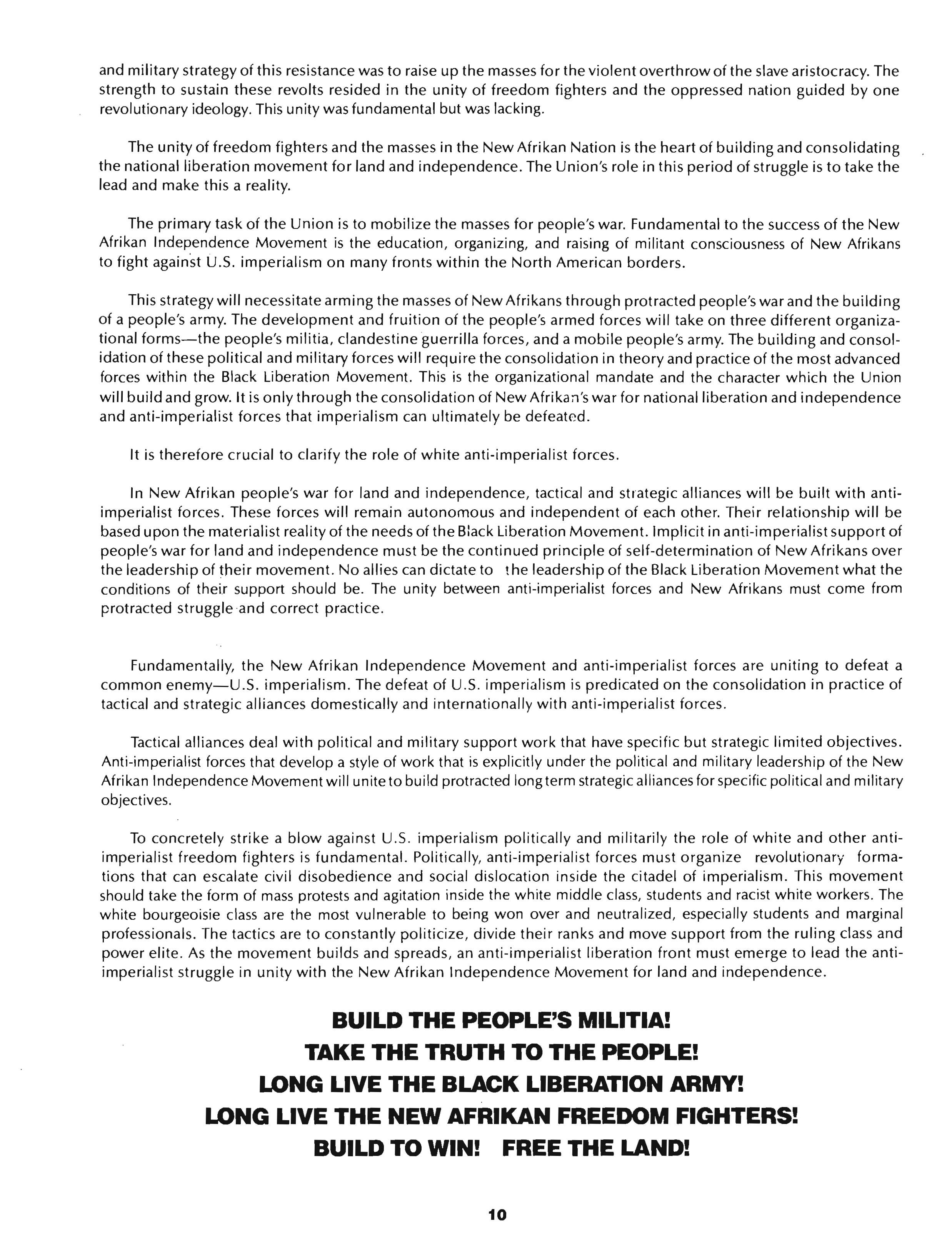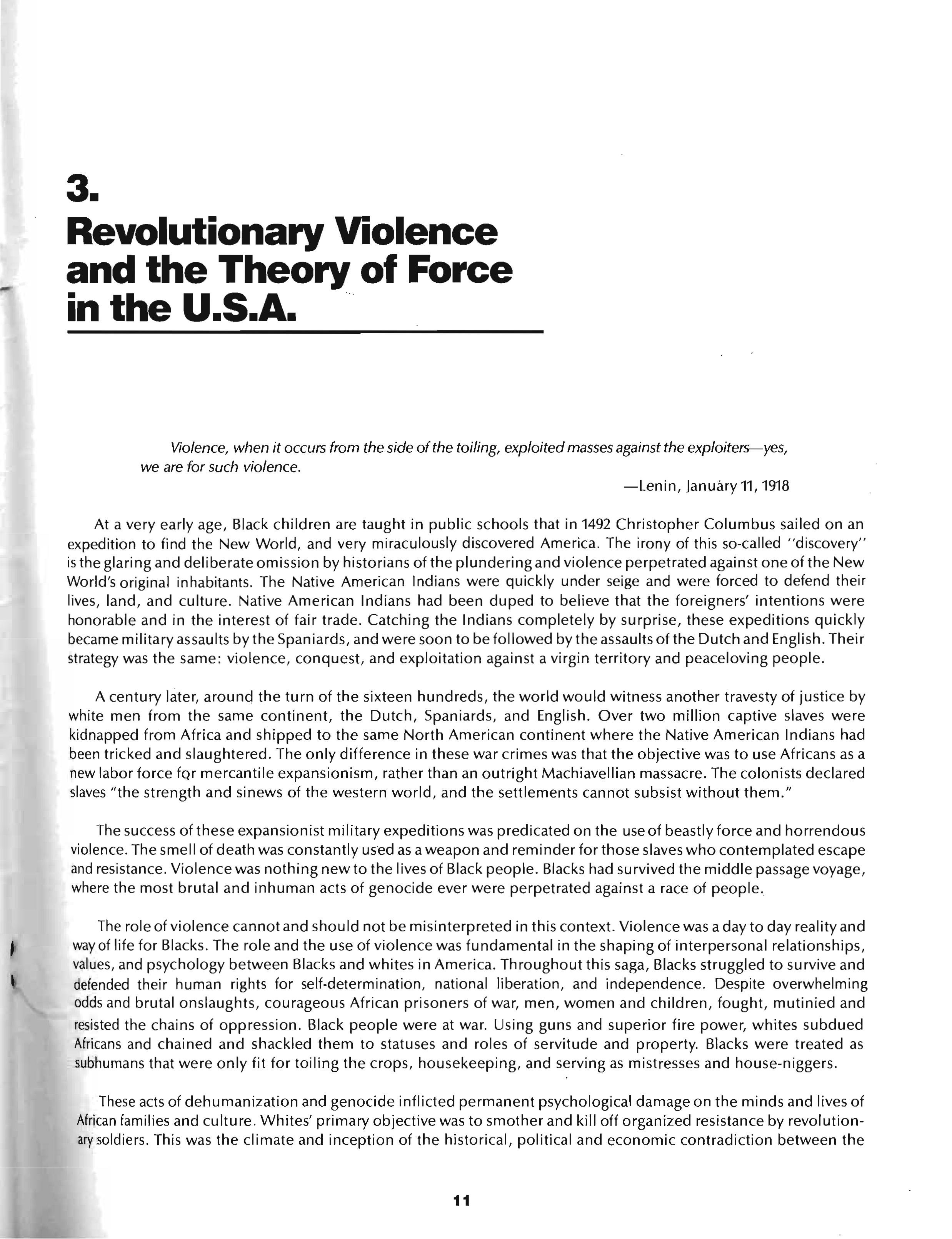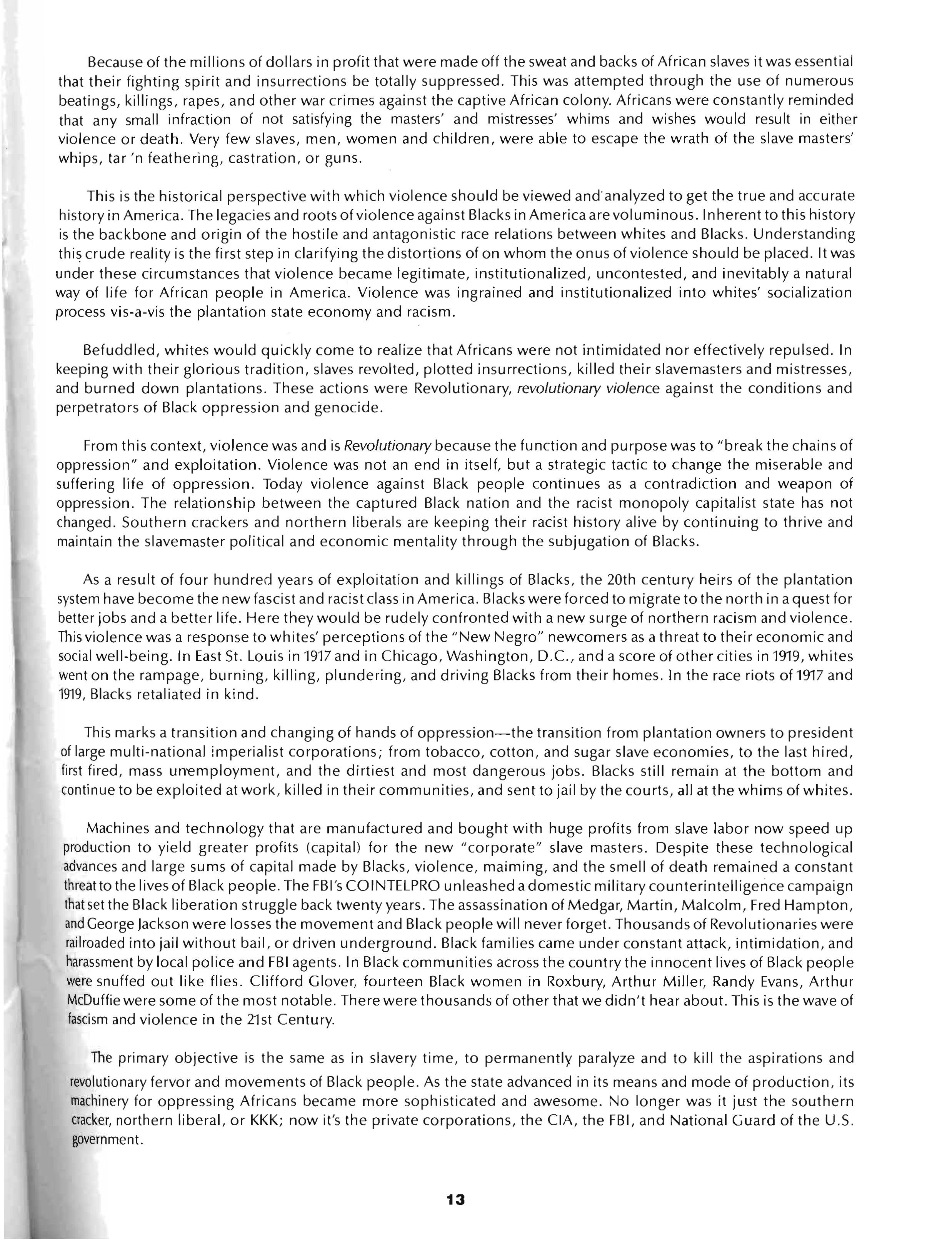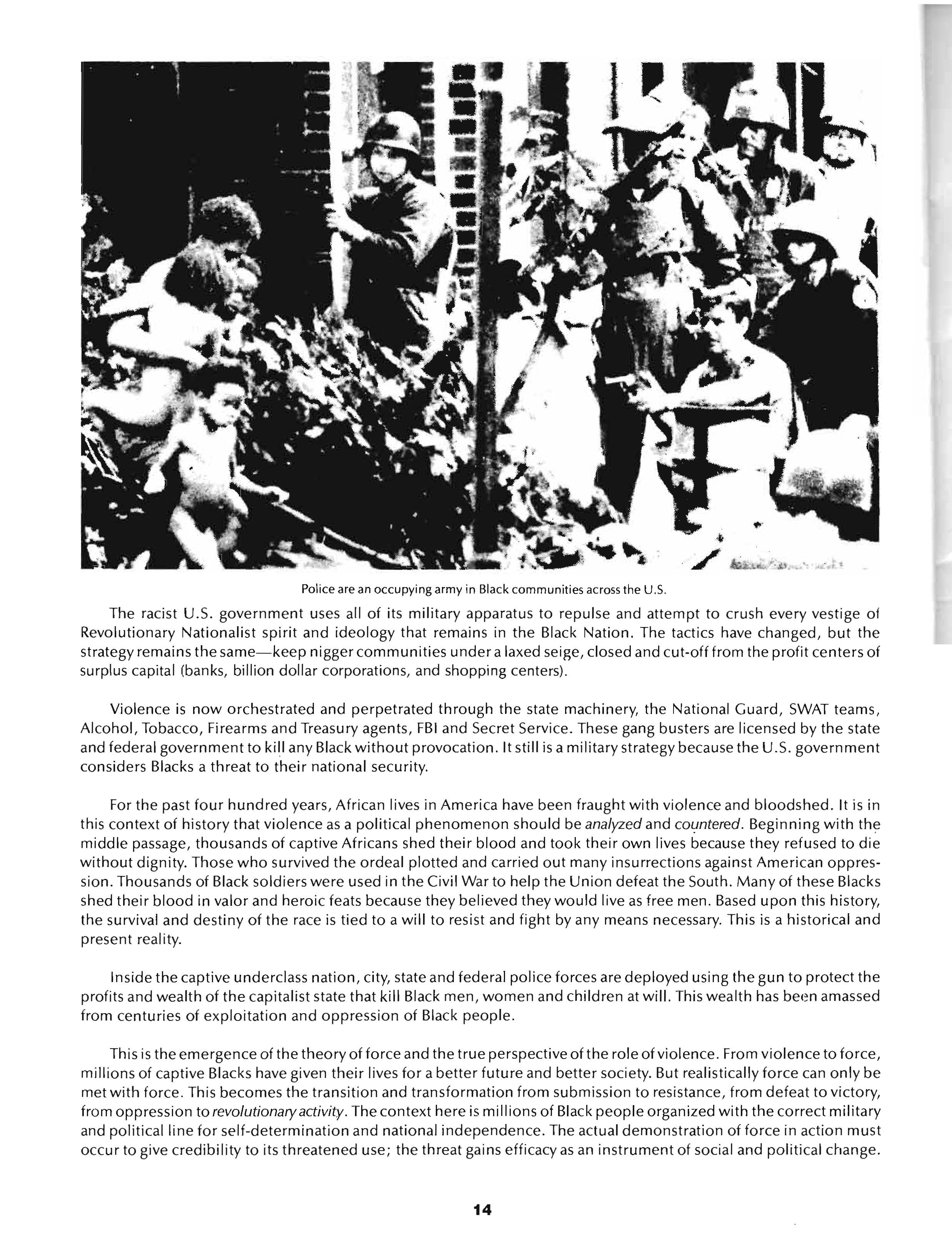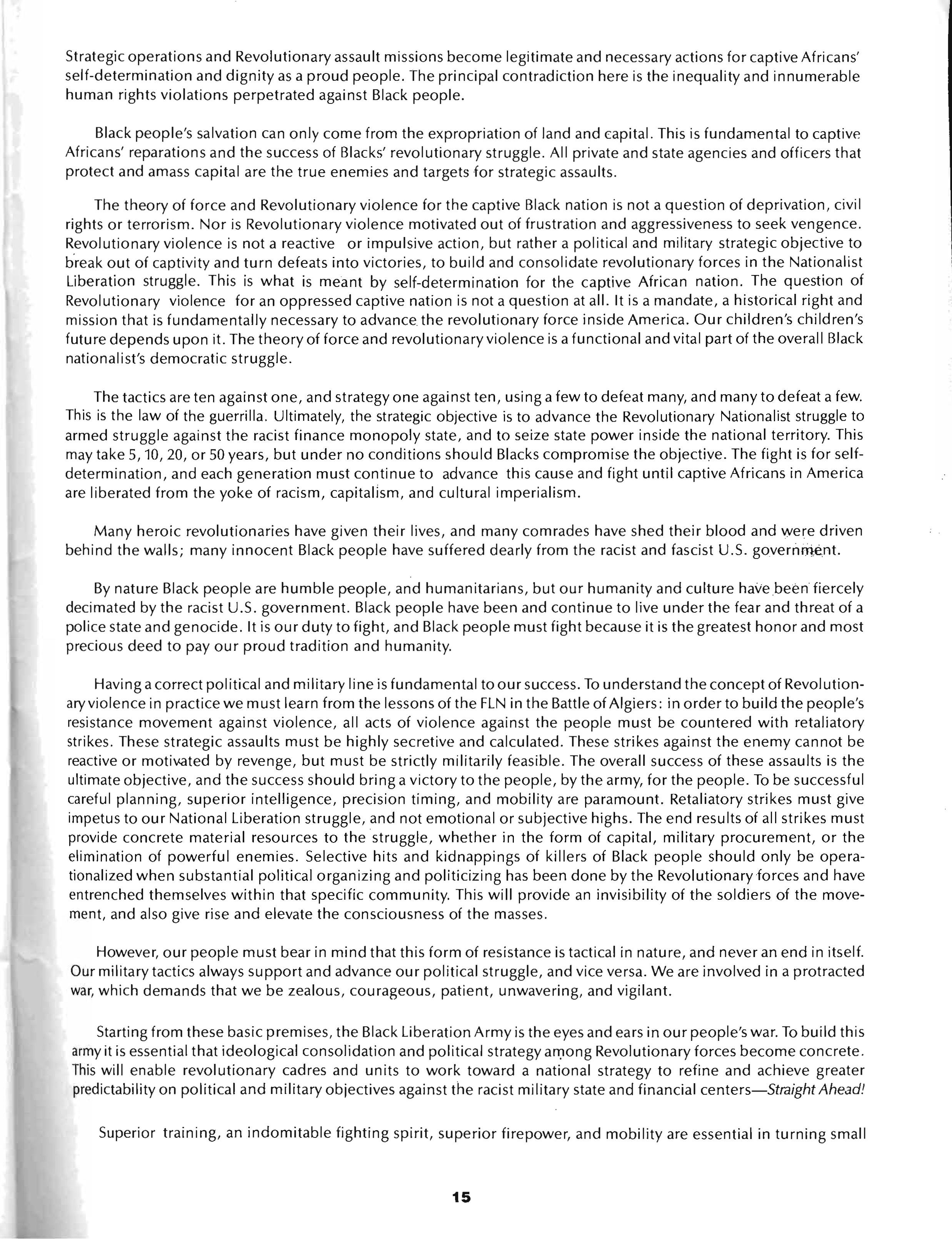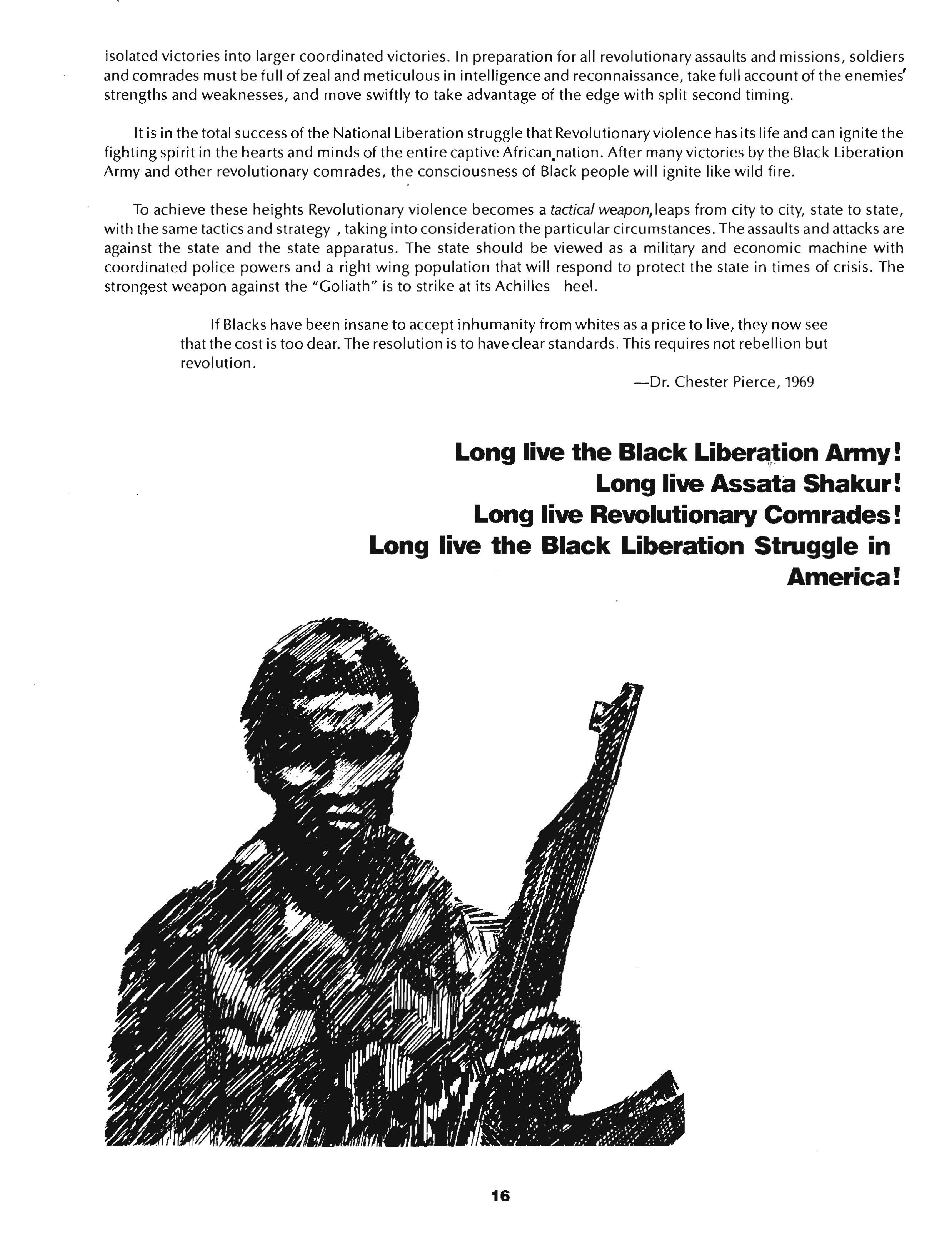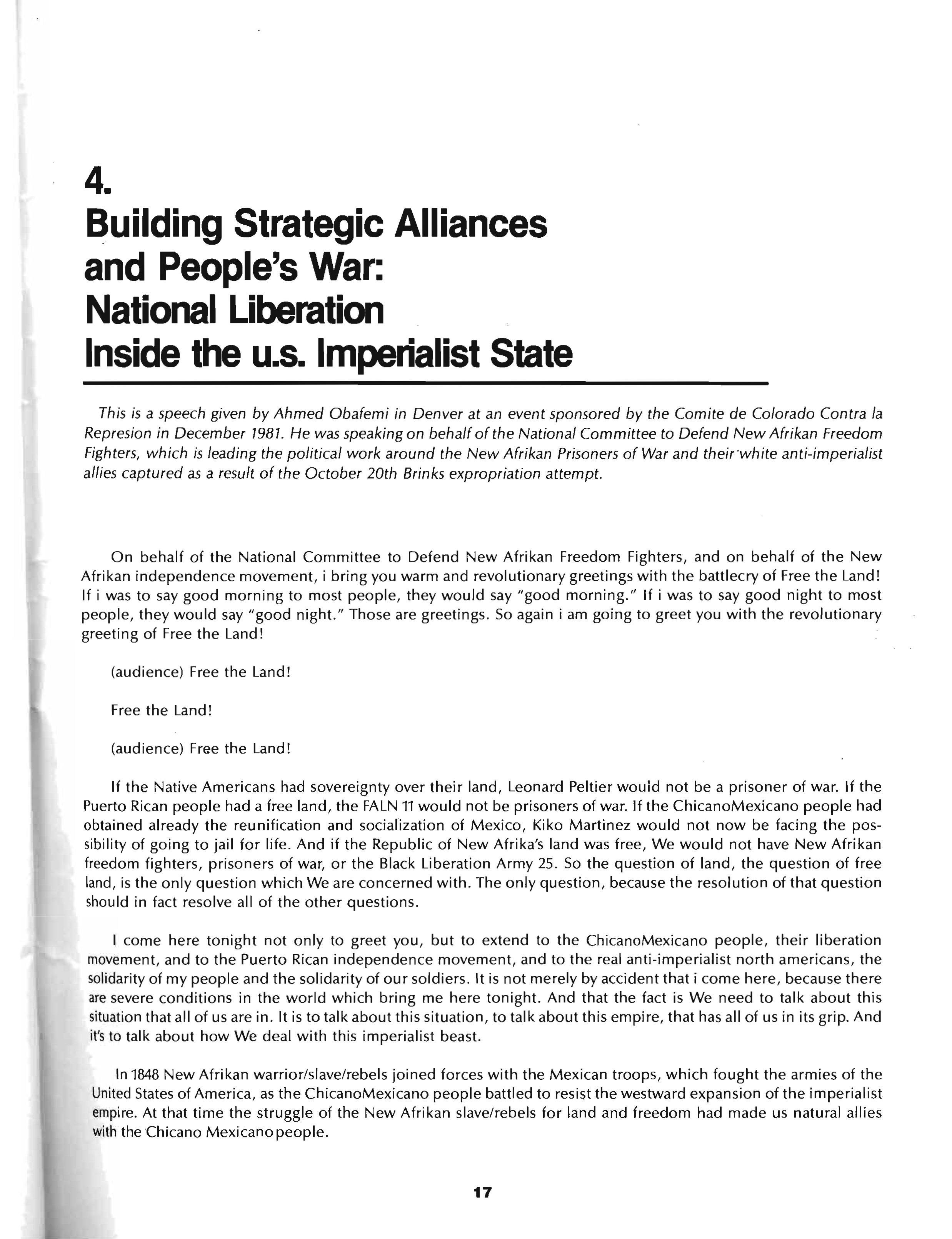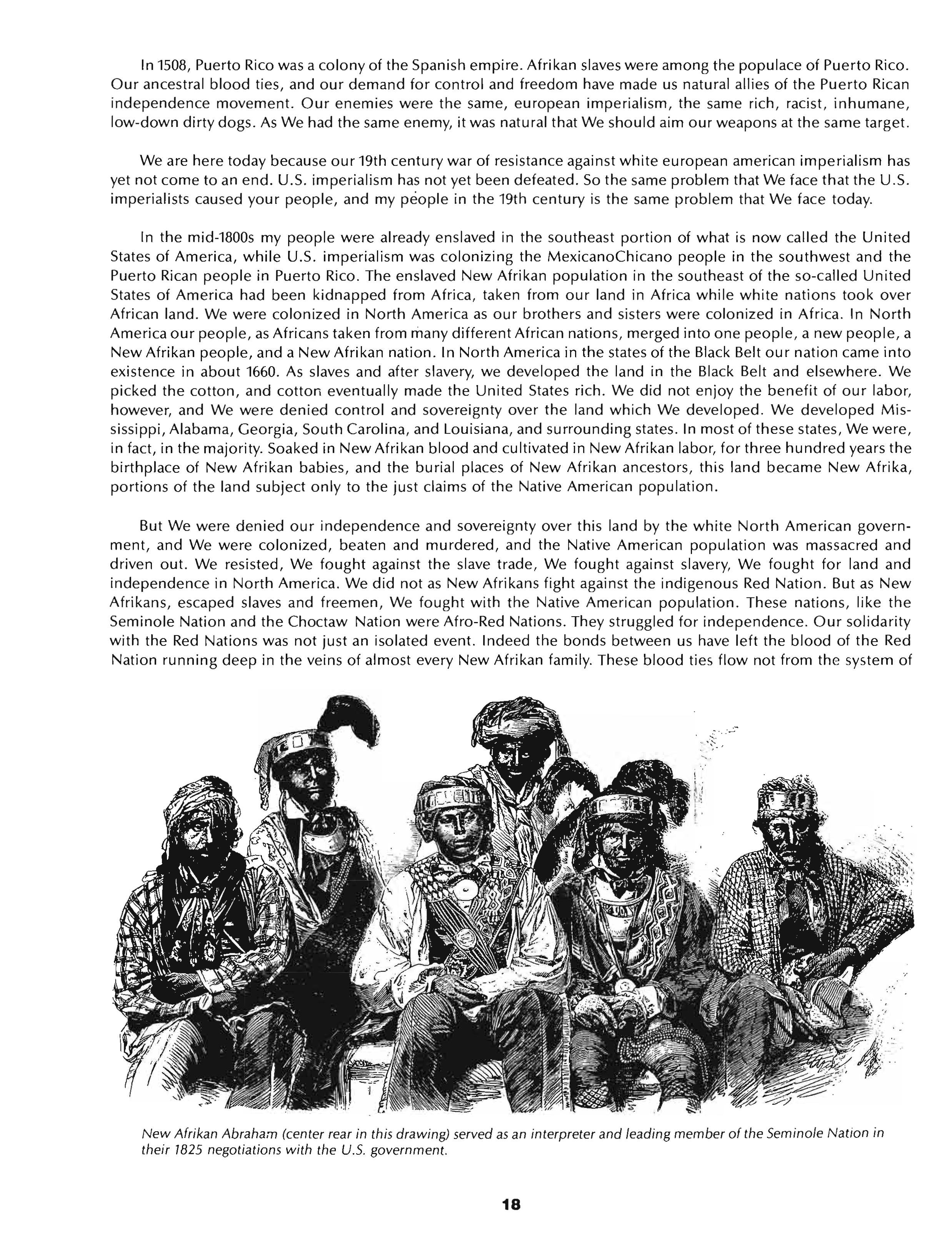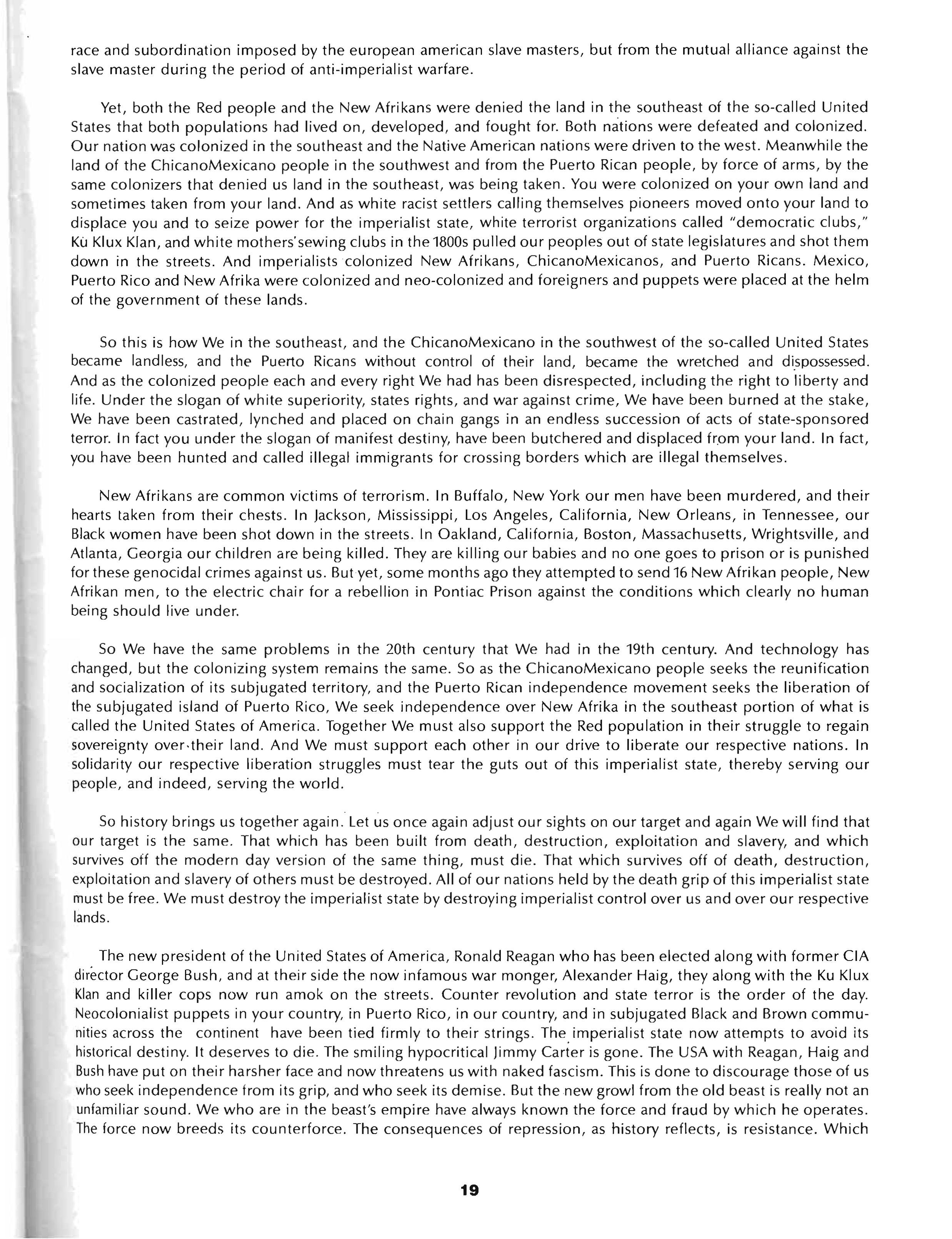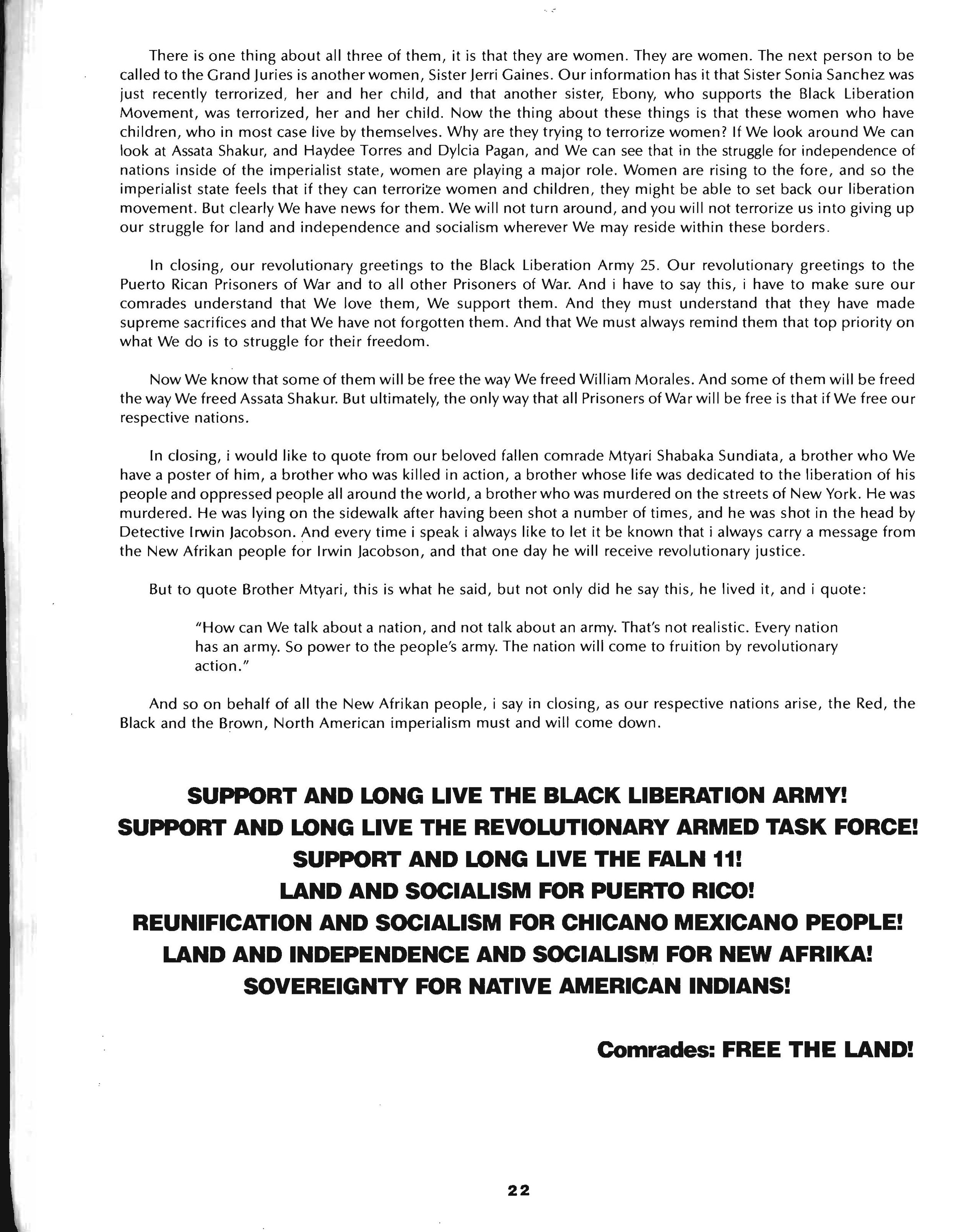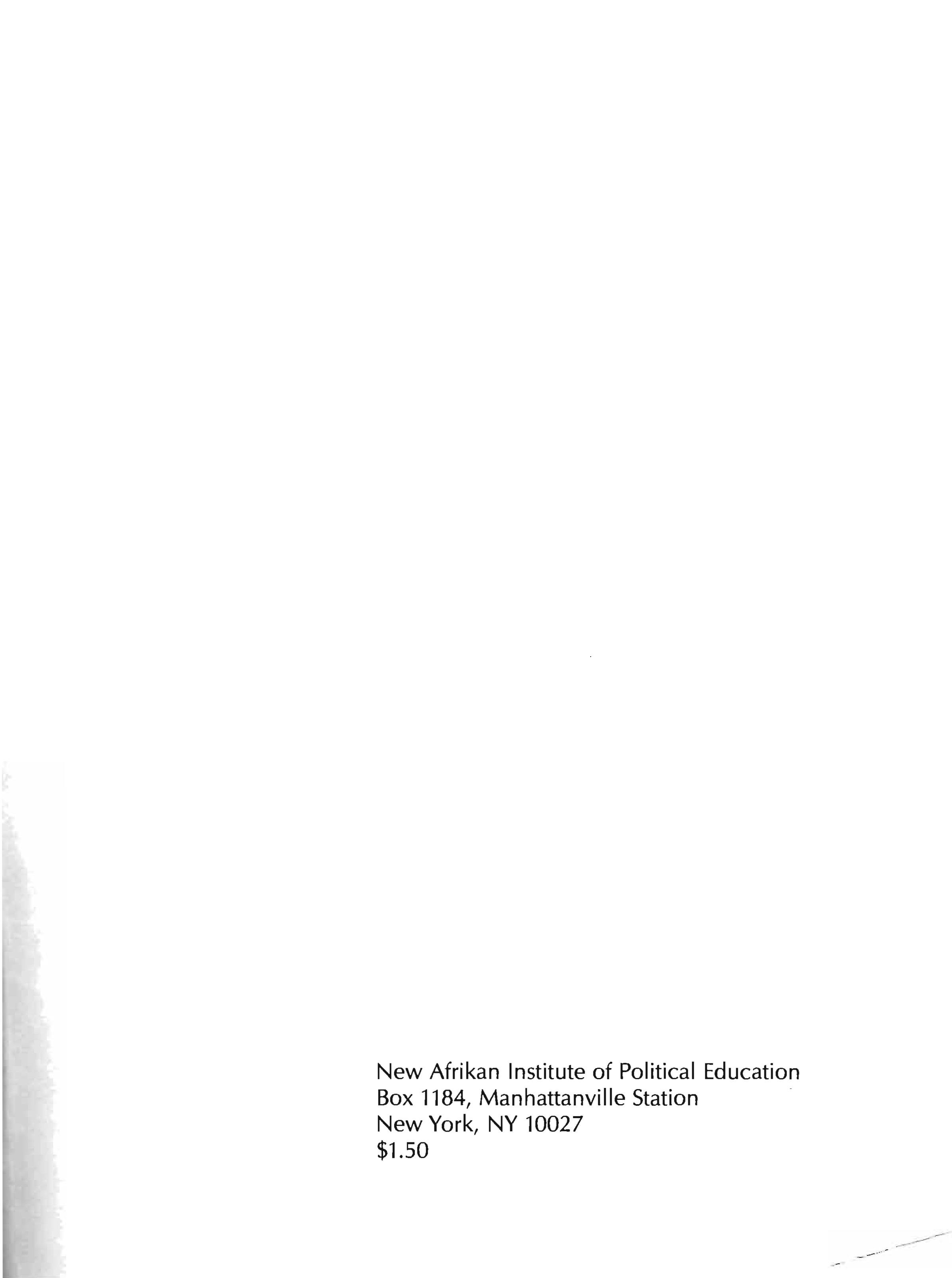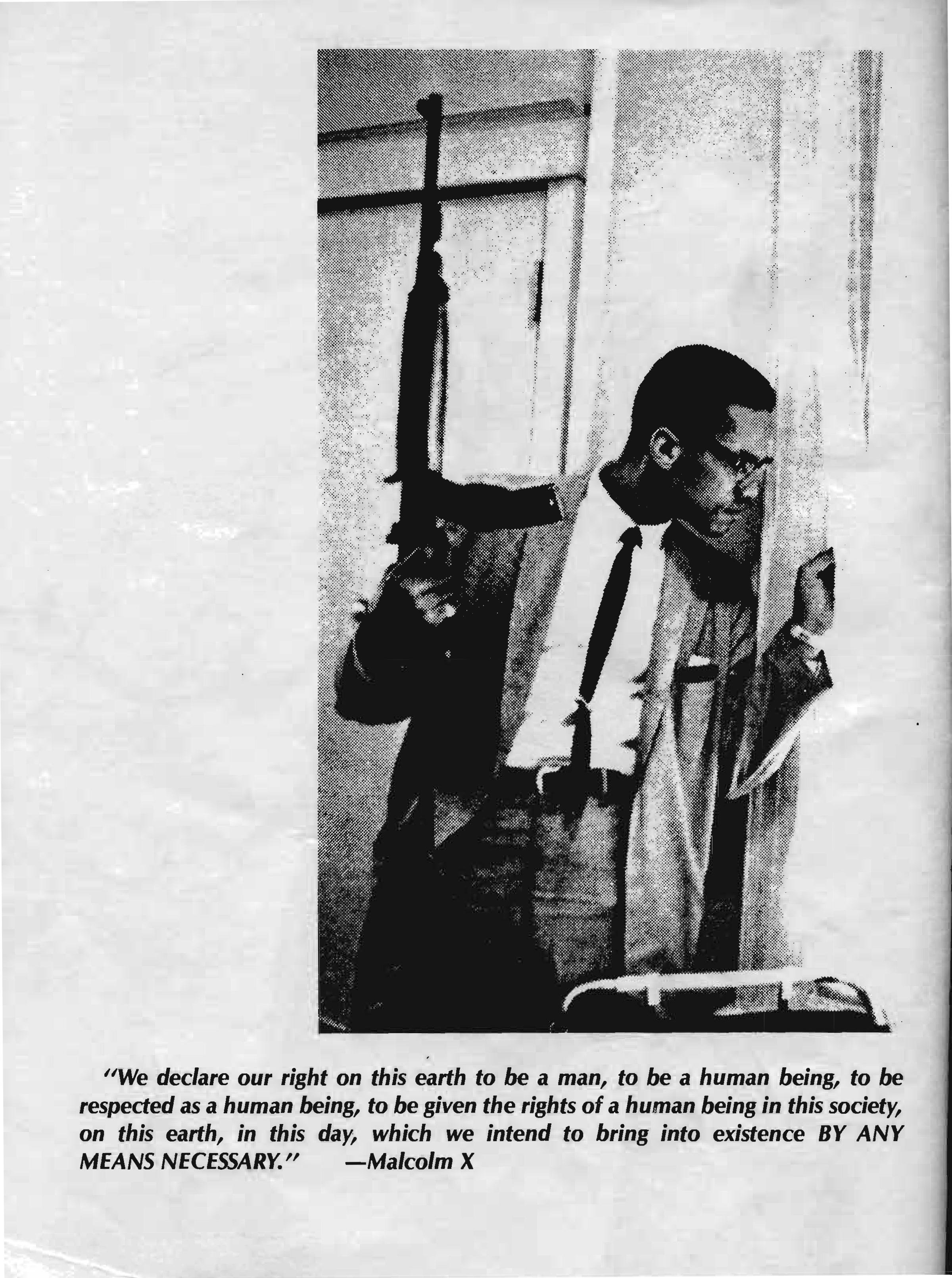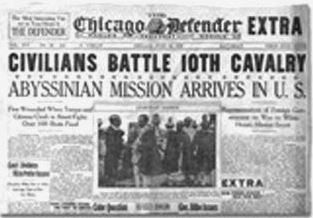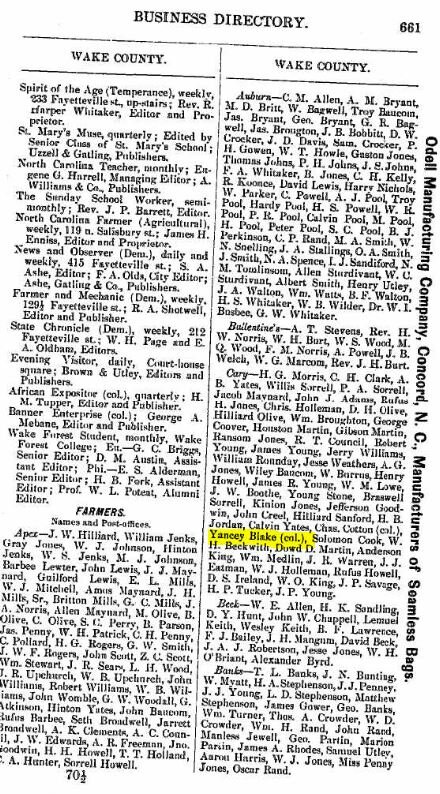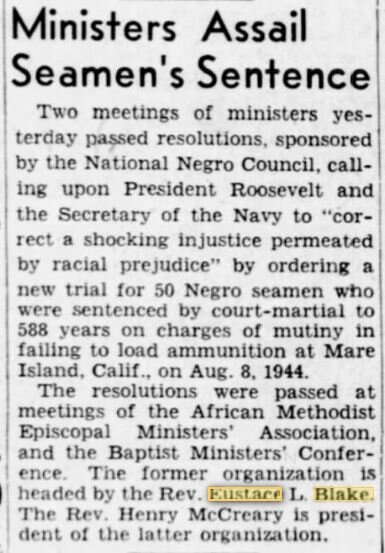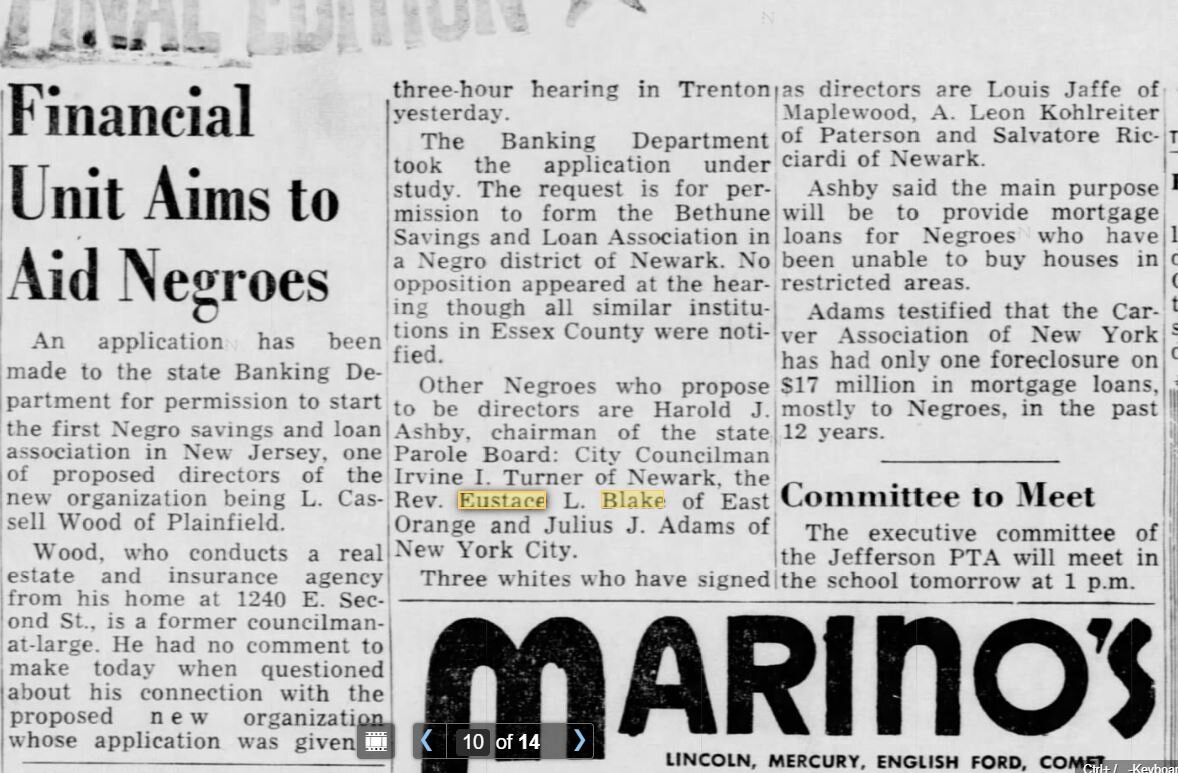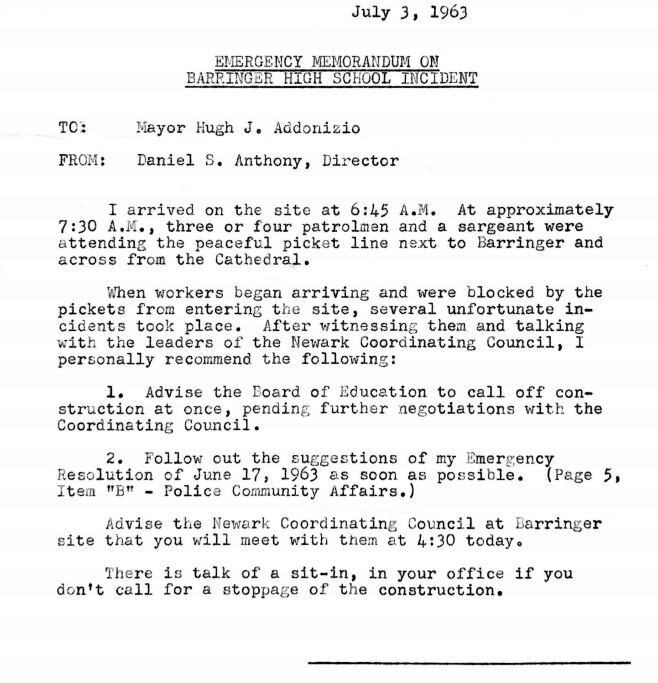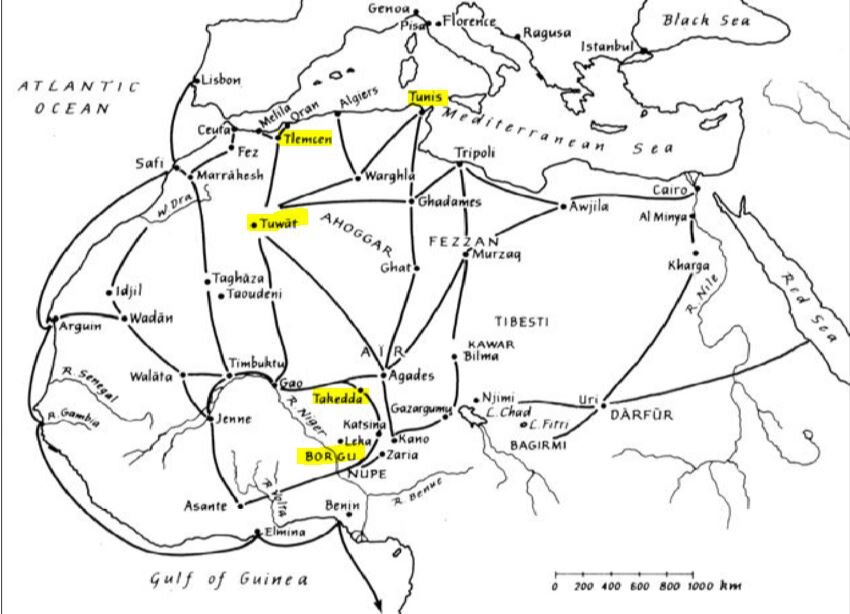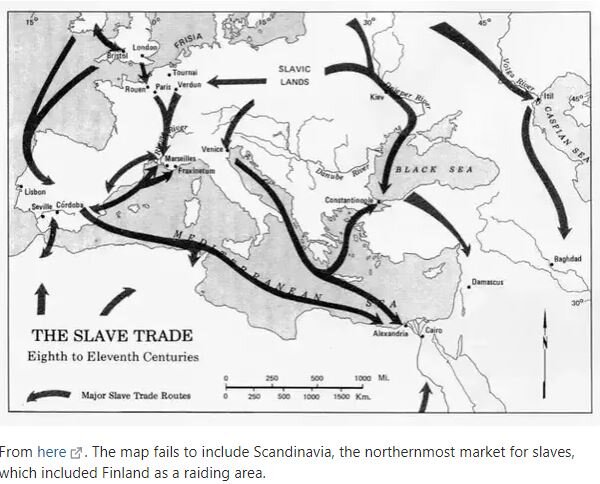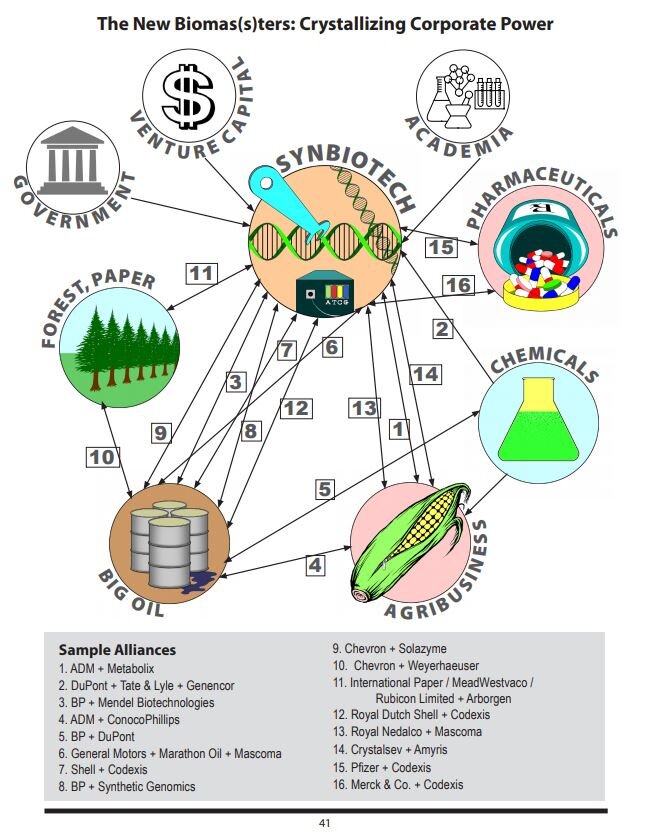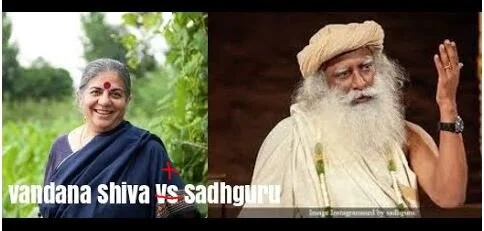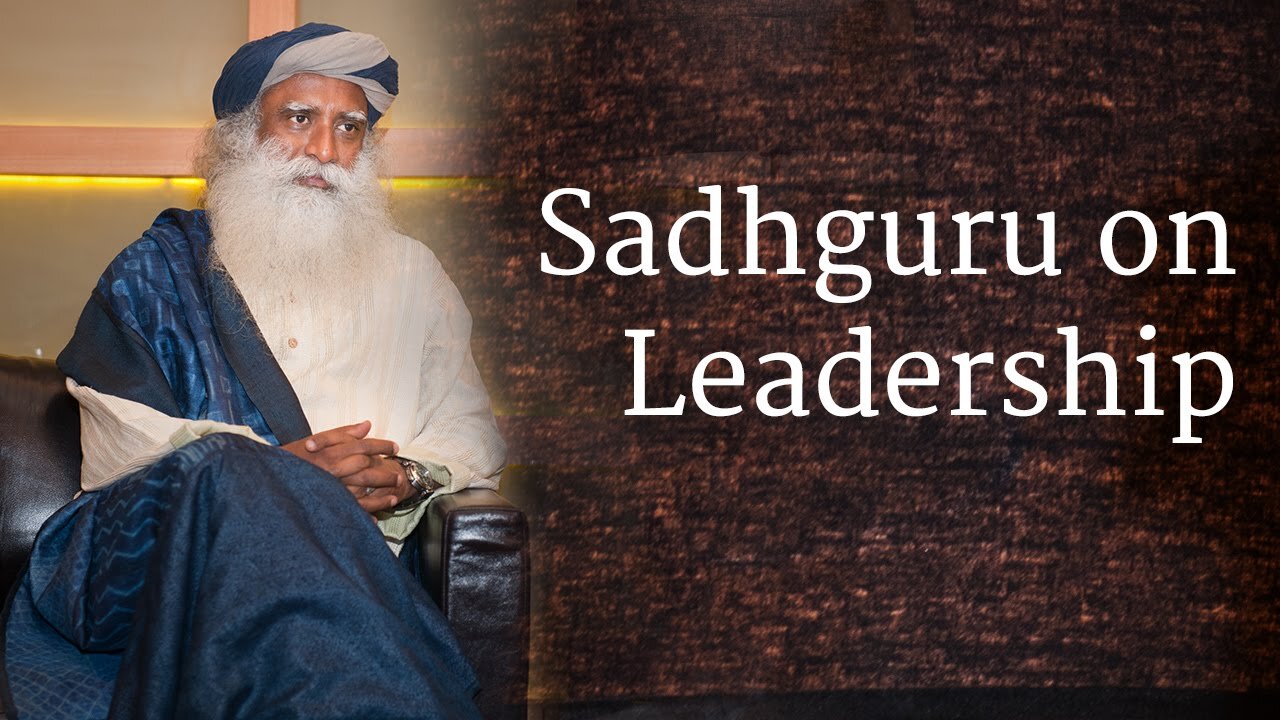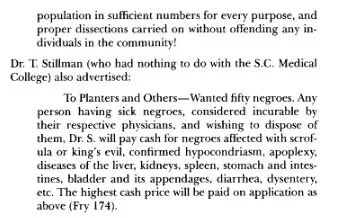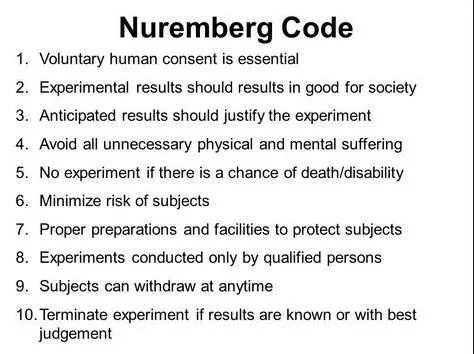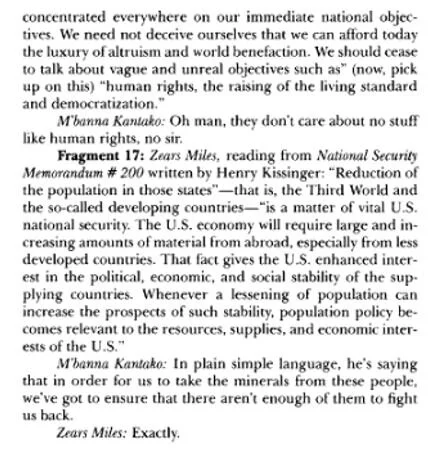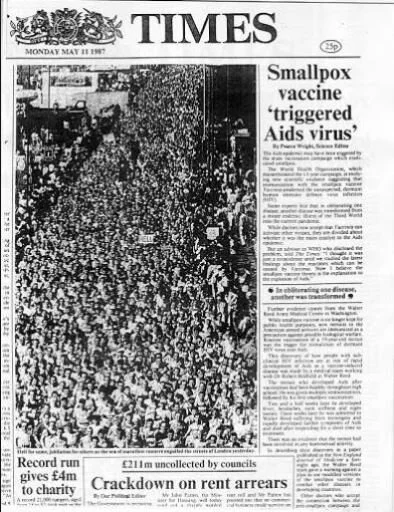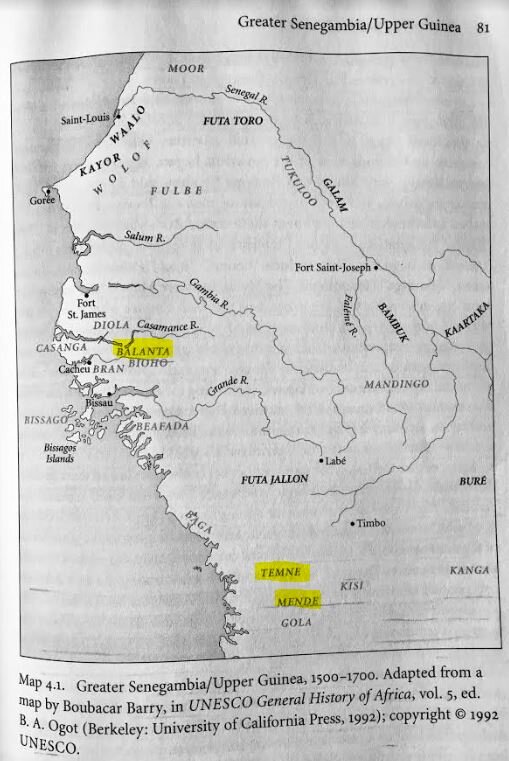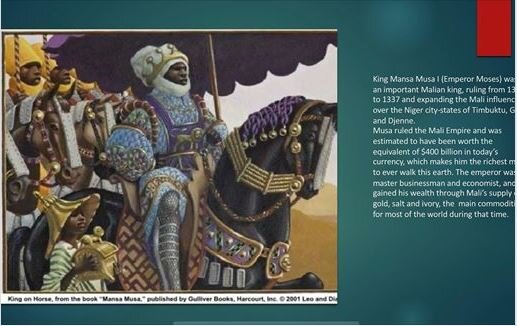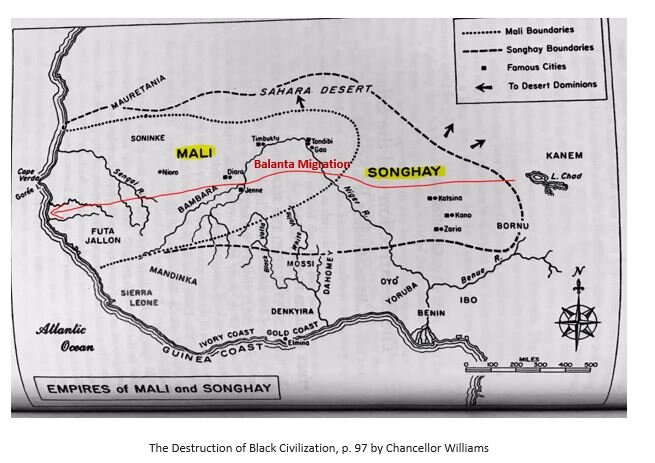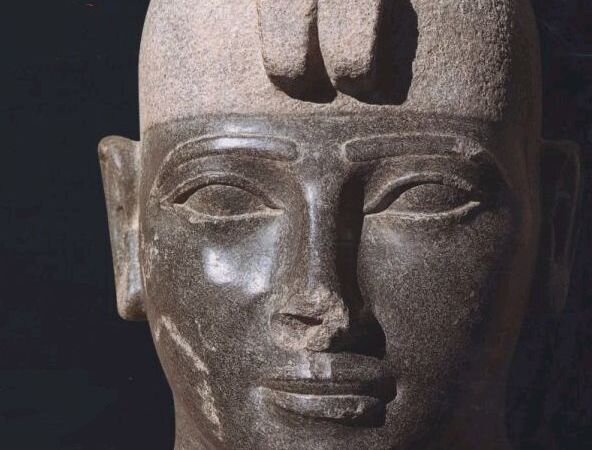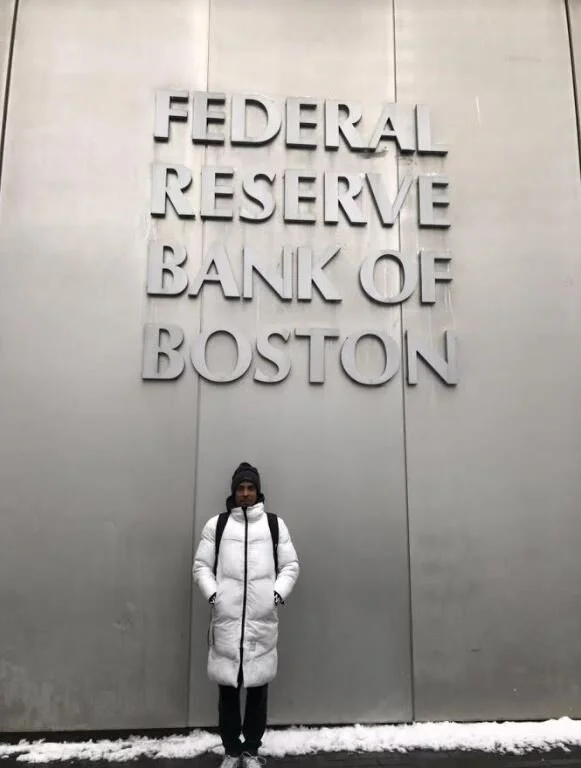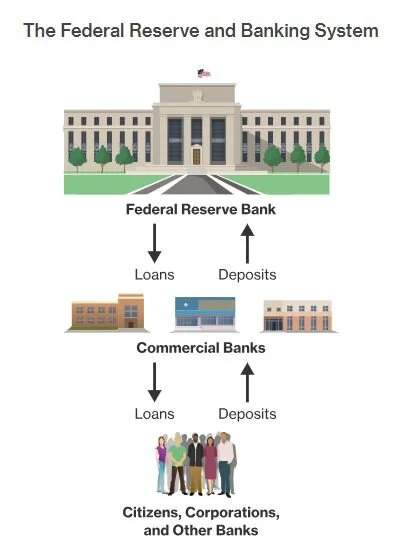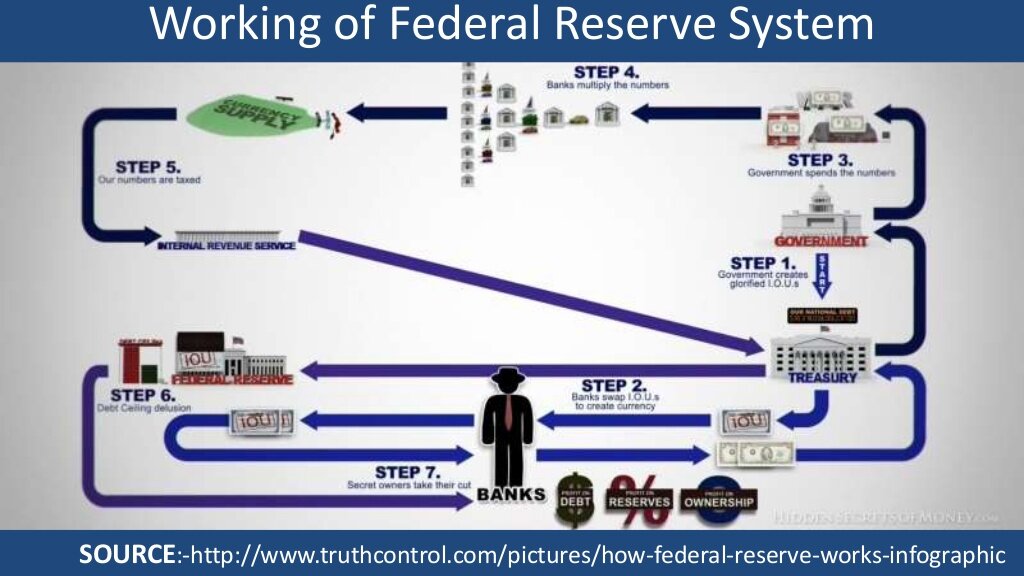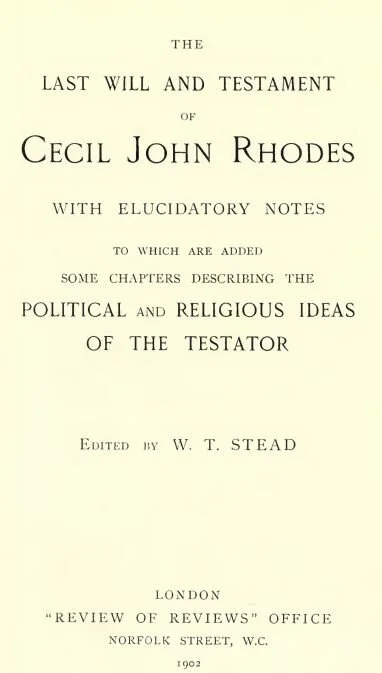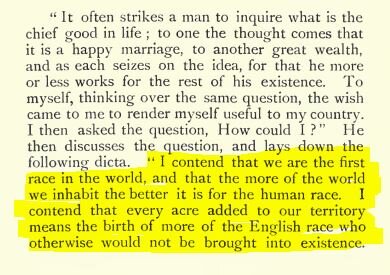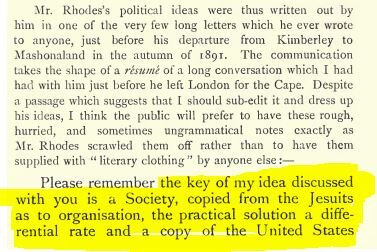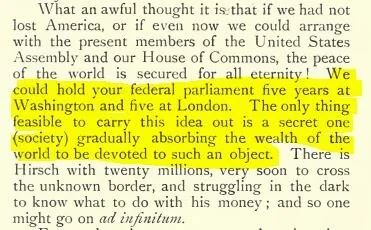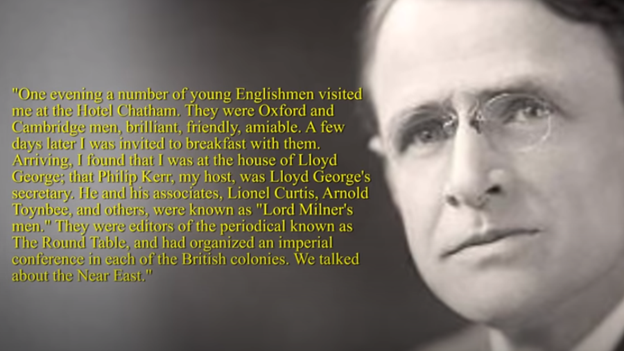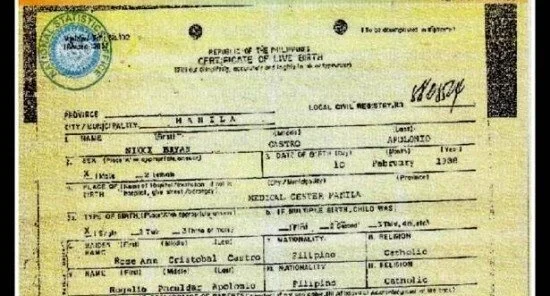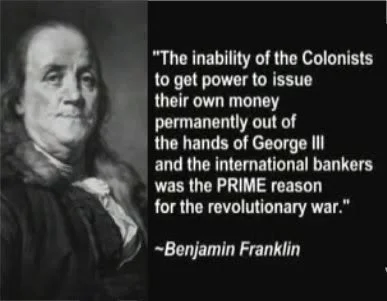“Revolution is based on land. Land is the basis of all independence. Land is the basis of freedom, justice and equality. . . . A revolutionary wants land so he can set up his own nation, an independent nation.”
-Malcolm X
"[Slavery] is one of the greatest crimes in history . . . . many of the issues that still trouble America have their roots in slavery".
- President George W. Bush, while visiting Senegal on July 8, 2003
Central to the origin of America’s race problem was the crime of trafficking that removed people from their LAND on the continent of Africa. This trafficking and uprooting people from their LAND - the Middle Passage - was the mechanism which resulted in their enslavement in America. This is a primary component of one of the greatest crimes in history admitted to by President George W. Bush in 2003 after 18,810 delegates from 170 countries, 16 heads of state, 58 foreign ministers, 44 ministers, 7,000 non-governmental representatives, and 1,300 journalists attended the World Conference Against Racism, Racial Discrimination, Xenophobia and Related Intolerance (WCAR) and declared that,
"slavery, and the slave trade, including the Trans-Atlantic Slave Trade, were appalling tragedies in the history of humanity not only because of their abhorrent barbarism but also in terms of their magnitude, organized nature [and] especially their negation of the essence of the victims… [and] that slavery and the slave trade are a crime against humanity…”
Therefore, providing JUSTICE for the crime of the Trans-Atlantic Slave Trade is necessarily going to require restoring LAND to the descendants of those people who were trafficked.
I have outlined the SOLUTION TO THE AMERICAN PROBLEM AND ENDING THE CIVIL WAR THAT WAS ESCALATED BY THE MURDER OF GEORGE FLOYD which requires the following:
Recognize the origin of the problem
Take Responsibility for the Crime Against Humanity
Pay Reparations
Conduct a United Nations Sponsored Plebiscite for African American Self Determination
Support the immediate formation of Black Community Protection Forces
I am now going to focus on point 4.Conduct a United Nations Sponsored Plebiscite for African American Self Determination which gives every victim of the crime of trafficking from Africa and enslavement in America a chance to choose among and receive the remedy of one of the four options: (1) US citizenship, (2) return to Africa, (3) emigration to another country and (4) the creation of a new African nation on American soil.
This article is going to focus specifically on option (2) return to Africa and (4) the creation of a new African nation on American soil.
THE FIRST DEMAND: RETURN TO ANCESTRAL LANDS
The first demand for JUSTICE by the victims of the crime of trafficking from Africa and enslavement in America was to return to their ancestral homelands. From 1619 until Nat Turner’s insurrection in 1831, the vast majority of enslaved people did not write down their demands for Justice. However, such demands were recorded in their “Slave Songs” which spoke of “crossing over” to “the promise land” and encoded news of those coming from and returning to Africa. In addition to the record of the slave songs, there is the following which is representative of the time:
In January 1773, Prince Hall and seventy three other African-American delegates presented an emigration plea to the Massachusetts Senate.
1792, January - 1,130 slaves who sympathized with the British during the American Revolution, led by Thomas Peters and David George departed from Canada to Sierra Leone. They were followed by nearly 500 maroons from Jamaica in 1800.
1815 - Paul Cuffe takes thirty-eight Negro colonists to Sierra Leone. In a letter dated May 18, 1818, Samuel Wilson, one of Cuffe’s emigrants, asked Richard Allen, “Do you not know that the land where you are is not your own? Your fathers were carried into that to increase strangers’ treasure, . . . Africa calls for men of character to fill stations in the legislature.” He added that Negro ministers were not doing the will of God by remaining in the United states. Another emigrant, Perry Locke, wrote, “Your mother country. . . . is like the land of Canaan.”
1816 - The number of freed slaves and their descendants grew steadily since the American Revolutionary War, and slaveholders were concerned about the Free Blacks' ability to aid their slaves to escape or to form a slave rebellion. (Siphiwe note: Again, evidence that the desire was to escape from America). It was also believed by many that, because of white racism, the "amalgamation," or integration, of African Americans with mainstream American culture was out of the question. They needed to relocate elsewhere, where they could live free of white prejudices.
Thus, by this time, both the white supremacists and “abolitionists” agreed that returning the free people of color (Negroes) to their ancestral lands was the best solution. The Society for the Colonization of Free People of Color of America, commonly known as the American Colonization Society (ACS) was founded by Robert Finley to encourage and support the voluntary migration of free African-Americans to the continent of Africa. This was the desire not just of most free people of color (Negroes), but almost the entirety of the victims still held in slavery. The free and educated black men demanded this.
Lott Carey said,
“I am an African; and in this country (the United States), however meritorious my conduct and respectable my character, I cannot receive the credit due to either. I wish to go to a country where I shall be estimated by my merits and not by my complexion, and I feel bound to labour for my suffering races.”
On April 3, 1820 Daniel Coker wrote,
“I can say, that my soul cleaves to Africa . . . I expect to give my life to bleeding, groaning, dark, benighted Africa. . . . I should rejoice to see you in this land; it is a good land; it is a rich land, and I do believe it will be a great nation, and a powerful and worthy nation. . . .If you ask my opinion as to coming, I say, let all that can, sell out and come; come, and bring ventures, to trade, etc., and you may do much better than you can possibly do in America, and not work half so hard. I wish that thousands were here. . .”
As late as 1850, Martin Delaney said,
“Submission does not gain for us an increase of friends nor respectability, as the white race will only respect those who oppose their usurpation, and acknowledge as equals those who will not submit to their rule. . . . Africa is our fatherland, we its legitimate descendants, Our policy must be. . . Africa for the African race and black men to rule them.”
HERE THEN, IT IS CLEAR THAT THE JUSTICE DEMANDED BY THE VICTIMS OF THE CRIME OF TRAFFICKING FROM AFRICA AND ENSLAVEMENT IN AMERICA WAS TO RETURN TO THEIR ANCESTRAL LAND and this was agreed to by both white supremacists and “abolitionists” in 1816.
2. THE SECOND DEMAND: LAND IN AMERICA.
By their very actions of running off the plantation, the escaped victims of the crime of trafficking from Africa and enslavement in America showed their desire for land in America where they would be free of control by their enslavers. Several African-American maroon societies lived in the Great Dismal Swamp during early American history. These Great Dismal Swamp maroons consisted of black refugee slaves who had escaped to seek safety and liberty.Excavations reveal island communities existing until the Civil War. Charlie, a maroon who worked illegally in a lumber camp in the swamp, later recalled that there were whole families of maroons living in the Dismal Swamp, some of whom had never seen a white man and would be terrified if they did.
THUS WAS BORN THE SECOND DEMAND FOR LAND IN AMERICA.
The following is representative of this demand for LAND in America at this time:
1817 - “The free people of Richmond, Virginia, thought it advisable. . . to make public their sentiments respecting the movement (to be colonized/integrated into America.) William Bowler and Lentry Craw were the leading spirits of the meeting. They agreed with the Society that it was not only proper, but would ultimately tend to benefit and aid a great portion of their suffering fellow creatures to be colonized; but they preferred being settled ‘in the remotest corner of the land of their nativity.’
Richard Allen said,
“This land, which we have watered with our tears and our blood, is now our mother country, and we are well satisfied to stay where wisdom abounds and the gospel is free. . . . Whereas our ancestors (not of choice) were the first successful cultivators of the wilds of America, we their descendants feel ourselves entitled to participate in the blessings of her luxuriant soil. . . .”
Denmark Vesey said,
“We are free, but the white people here won't let us be so; and the only way is to raise up and fight the whites.”
David Walker said,
"If I remain in this bloody land, I will not live long...I cannot remain where I must hear slaves' chains continually and where I must encounter the insults of their hypocritical enslavers."
In September 1829, Walker published his appeal to African Americans entitled Walker's Appeal, in Four Articles; Together with a Preamble, to the Coloured Citizens of the World, but in Particular, and Very Expressly, to Those of the United States of America, Written in Boston, State of Massachusetts, September 28, 1829. The purpose of the document was to encourage readers to take an active role in fighting their oppression, regardless of the risk, and to press white Americans to realize the moral and religious failure of slavery.
"America," Walker argued, "is more our country, than it is the whites — we have enriched it with our blood and tears."
IN "AN ADDRESS TO THE SLAVES OF THE UNITED STATES OF AMERICA" (1843), Henry Highland Garnet said,
“You had better all die -- die immediately, than live slaves and entail your wretchedness upon your posterity. If you would be free in this generation, here is your only hope. However much you and all of us may desire it, there is not much hope of redemption without the shedding of blood. If you must bleed, let it all come at once rather die freemen, than live to be slaves.
Let your motto be resistance! resistance! RESISTANCE! No oppressed people have ever secured their liberty without resistance. What kind of resistance you had better make, you must decide by the circumstances that surround you, and according to the suggestion of expediency.”
Alexander Crummell said,
“IT IS FOLLY FOR MERE IDEALISTS TO CONTENT THEMSELVES WITH THE NOTION THAT ‘WE ARE AMERICAN CITIZENS’; THAT, ‘AS AMERICAN CITIZENS OURS IS THE COMMON HERITAGE AND DESTINY OF THE NATION’; . . .THAT ‘THERE IS BUT ONE TIDE IN THIS LAND; AND WE SHALL FLOW WITH ALL OTHERS ON IT.’ ON THE CONTRARY, I ASSERT, WE ARE JUST NOW A ‘PECULIAR PEOPLE’ IN THIS LAND. . . . WHAT THIS RACE NEED IN THIS COUNTRY IS POWER - THE FORCES THAT MAY BE FELT.”
Thus, up until the eve of the Civil War, the victims of the crime of trafficking from Africa and enslavement in America, and the majority of their escaped and/or freed brethren and sistren, including the most intelligent among them, all desired either LAND in Africa or LAND in America. The idea that the victims of the crime of trafficking from Africa and enslavement in America were citizens of America and desired to integrate was confined mostly to Christianized mulattoes like Frederick Douglass, and did not represent the aims and aspiration of black people in America. W.E.B. DuBois writes in Black Reconstruction in America: 1860 to 1880,
“IT IS CLEAR THAT FROM THE TIME OF WASHINGTON AND JEFFERSON DOWN TO THE CIVIL WAR, WHEN THE NATION WAS ASKED IF IT WAS POSSIBLE FOR FREE NEGROES TO BECOME AMERICAN CITIZENS IN THE FULL SENSE OF THE WORD, IT ANSWERED BY A STERN AND DETERMINED ‘NO!’ THE PERSONS WHO CONCEIVED OF THE NEGROES AS FREE AND REMAINING IN THE UNITED STATES WERE A SMALL MINORITY BEFORE 1861, AND CONFINED TO (mis)EDUCATED FREE NEGROES AND SOME OF THE ABOLITIONISTS”…..
CIVIL WAR, EMANCIPATION AND LAND AS THE SOLUTION TO THE RACE PROBLEM
DuBois continues,
“When Northern armies entered the South they became armies of emancipation. It was the last thing they planned to be. The North did not propose to attack property. It did not propose to free slaves. This was to be a white man’s war to preserve the Union, and the Union must be preserved.
Nothing that concerned the amelioration of the Negro touched the hear of the mass of Americans nor could the common run of men realize the political and economic cost of Negro slavery. When, therefore, the Southern radicals, backed by political oligarchy and economic dictatorship in the most extreme form in which the world had seen it for five hundred years, precipitated secession, that part of the North that opposed the plan had to hunt for a rallying slogan to unite the majority in the North and in the West, and if possible, bring the Border States into an opposing phalanx.
Freedom for slaves furnished no such slogan. Not one-tenth of the Northern white population would have fought for any such purpose. Free soil was a much stronger motive, but it had no cogency in this contest because the Free Soilers did not dream of asking free soil in the South, since that involved the competition of slaves, or what seemed worse than that, of free Negroes. On the other hand, the tremendous economic ideal of keeping this great market for goods, the United States, together with all its possibilities of agriculture, manufacture, trade and profit, appealed to both the West and the North; and what was then much more significant, it appealed to the Border States,
‘To the flag we are pledged, all its foes we abhor,
And we ain’t for the nigger, but we are for the war.’
The Border States wanted the cotton belt in the Union so that they could sell it their surplus slaves; but they also wanted to be in the same union with the North and West, where the profit of trade was large and increasing. The duty then of saving the Union became the great rallying cry of a war which for a long time made the Border States hesitate and confine secession to the far South. And yet they all knew that the only thing that really threatened the Union was slavery and the only remedy was Abolition.
If, now, the far South had had trained and astute leadership, a compromise could have been made which, so far as slavery was concerned, would have held the abnormal political power of the South intact, made the slave system impregnable for generations, and even given slavery practical rights throughout the nation.
Both North and South ignored in differing degrees the interests of the laboring classes. The North expected patriotism and union to make white labor fight; the South expected all white men to defend the slaveholders’ property.
Both North and South expected at most a sharp, quick fight and victory; more probably the South expected to secede peaceably, and then outside the Union, to impose terms which would include national recognition of slavery, new slave territory and new cheap slaves. The North expected that after a threat and demonstration to appease its ‘honor,’ the South would return with the right of slave property recognized and protected but geographically limited.
Both sections ignored the Negro. To the Northern masses the Negro was a curiosity, a sub-human minstrel, willingly and naturally a slave, and treated as well as he deserved to be. He had not sense enough to revolt and help Northern armies, even if Northern armies were trying to emancipate him, which they were not. The North shrank at the very thought of encouraging servile insurrection against the whites. Above all it did not propose to interfere with property. Negroes on the whole were considered cowards and inferior beings, whose very presence in American was unfortunate. . . .Only John Brown knew just how revolt had come and would come and he was dead.
Thus the Negro himself was not seriously considered by the majority of men, North or South. . . . On the 4th of July, Colonel Pryor of Ohio delivered an address to the people of Virginia in which he repudiated the accusation that the Northern army were Abolitionists.
‘I desire to assure you that the relation of master and servant, as recognized in your state shall be respected. Your authority over that species of property shall not in the least be interfered with. To this end, I assure you that those under my command have peremptory orders to take up and hold any Negroes found running about the camp without passes from their masters.’
Loyal newspapers, orators and preachers, with few exceptions, while advocating stringent measures for putting down the Rebellion, carefully disclaimed any intention of disturbing the ‘peculiar institution’ of the South. The Secretary of State informed foreign governments, through our ministers abroad, that this was not our purpose. President Lincoln, in his earlier messages, substantially reiterated the statement. Leading generals, on entering Southern territory, issued proclamations to the same effect. . . .
The North started out with the idea of fighting the war without touching slavery. They faced the fact, after severe fighting, that Negroes seemed a valuable asset as laborers, and they therefore declared them ‘contraband of war.’ It was but a step from that to attract and induce Negro Labor to help the Northern armies. Slaves were urged and invited into the Northern armies; they became military laborers and spies; not simply military laborers, but laborers on the plantations, where the crops went to help the Federal army or were sold North. Thus, wherever Northern armies appeared, Negro laborers came, and the North found itself actually freeing slaves before it had the slightest intention of doing so, indeed, when it had every intention not to.
General Butler in Virginia, commander of the Union forces at Fortress Monroe, met three slaves walking into his camp from the Confederate fortifications where they had been at work. Butler immediately declared these men ‘contraband of war’ and put them to work in his own camp. More slaves followed, accompanied by their wives and children.
On May 26 [1861], only two days after the one slave appeared before Butler, eight Negroes appeared; on the next day, forty-seven of all ages and both sexes. Each day they continued to come by twenties, thirties and forties until by July 30th the number had reached nine hundred. In a very short while the number ran up into the thousands. The renowned Fortress took the name of the ‘freedom fort’ to which the blacks came by means of a ‘mysterious spiritual telegraph.’
In December 1861, the Secretary of the Treasury, Simon Cameron, had written, printed and put into the mails his first report as Secretary of War without consultation with the President. Possibly he knew that his recommendation would not be approved, but ‘he recommended the general arming of Negroes . . .’ The published report finally said:
‘Persons held by rebels, under laws, to service as slaves, may, however, be justly liberated from their constraint, and made more valuable in various employments, through voluntary and compensated service, than if confiscated as subjects of property.’
Transforming itself suddenly from a problem of abandoned plantations and slaves captured while being used by the enemy for military purposes, the movement became a general strike against the slave system on the part of all who could find opportunity. The trickling streams of fugitives swelled to a flood. Once begun, the general strike . . . went madly and relentlessly on like some great saga.
‘Imagine, if you will, a slave population, springing from antecedent barbarism, rising up and leaving its ancient bondage, forsaking its local traditions and all the associations and attractions of the old plantation life, coming garbed in rags or in silks, with feet shod or bleeding, individually or in families and larger groups, - an army of slaves and fugitives, pushing its way irresistibly toward an army of fighting men, perpetually on the defensive and perpetually ready to attack. The arrival among us of these hordes was like the oncoming of cities. There was no plan in this exodus, no Moses to lead it. Unlettered reason or the mere inarticulate decision of instinct brought them to us. . . .’
This was the beginning of the swarming of the slaves, of the quiet but unswerving determination of increasing numbers no longer to work on Confederate plantations . . . .Wherever the army marched and in spite of all obstacles came the rising tide of slaves seeking freedom. For a long time, their treatment was left largely to the discretion of the department managers; some welcomed them, some drove them away, some organized them for work. Gradually, the fugitives became organized . . . .
After the first foolish year when the South woke up to the fact that there was going to be a real, long war, and the North realized just what war meant in blood and money, the whole relation of the North to the Negro and the Negro to the North changed.
The position of the Negro was strategic. His was the only appeal which would bring sympathy from Europe, despite strong economic bonds with the South, and prevent recognition of a Southern nation built on slavery. . . .Slowly but surely an economic dispute and a political test of strength took on the aspects of a great moral crusade.
The Negro became in the first year contraband of war; that is, property belonging to the enemy and valuable to the invader. And in addition to that, he became, as the South quickly saw, the key to Southern resistance. Either these four million laborers remained quietly at work to raise food for the fighters, or the fighters starved. Simultaneously, when the dream of the North for man-power produced riots, the only additional troops that the North could depend on were 200,000 Negroes, for without them, as Lincoln said, the North could not have won the war.
But this slow, stubborn mutiny of the Negro slave was not merely a matter of 200,000 black soldiers and perhaps 300,000 other black laborers, servants, spies and helpers. Back of this half million stood 3.5 million more.
Without their labor the South would starve. With arms in their hands, Negroes would form a fighting force which could replace every single Northern white soldier fighting listlessly and against his will with a black man fighting for freedom. . . .
[President} Lincoln . . . began to see it. He began to talk about compensation for emancipated slaves, and Congress, following almost too quickly, passed the Confiscation Act in August 1861, freeing slaves which were actually used in war by the enemy.
Lincoln then suggested that provisions be made for colonization of such slaves. He simply could not envisage free Negroes in the United States. What would become of them? What would they do? . . .
In August, Lincoln faced the truth, front forward; and that truth was not simply that Negroes out to be free; it was that thousands of them were already free, and that either the power which slaves put into the hands of the South was to be taken from it, or the North could not win the war. Either the Negro was to be allowed to fight or the draft itself would not bring enough white men into the army to keep up the war.
More than that, unless the North faced the world with the moral strength of declaring openly that they were fighting for the emancipation of slaves, they would probably find that the world would recognize the South as a separate nation; that ports would be opened; that trade would begin, and that despite all the military advantage of the North, the war would be lost. In August, 1862, Lincoln discussed Emancipation as a military measure; in September, he issued his preliminary proclamation; on January 1, 1863, he declared that the slaves of all persons in rebellion were ‘henceforward and forever free.’ . . .
It was not the Abolitionist alone who freed the slaves. The Abolitionists never had a real majority of the people of the United States back of them. Freedom for the slave was the logical result of a crazy attempt to wage war in the midst of four million black slaves, and trying the while sublimely to ignore the interest of those slaves in the outcome of the fighting . . . It was the fugitive slave who made the slaveholders face the alternative of surrendering to the North, or to the Negroes. . . . It was this plain alternative that brought Lee’s sudden surrender. . . .
There came the slow looming of emancipation. Crowds and armies of the unknown, inscrutable, unfathomable Yankees; cruelty behind and before; rumors of a new slave trade; but slowly, continuously, the wild truth, the better truth, the magic truth, came surging through.
There was to be a new freedom! And a black nation went tramping after the armies no matter what it suffered; no matter how it was treated, no matter how it died. First, without masters, without food, without shelter; then with new masters, food that was free, and improvised shelters, cabins, homes; and at last, land. They prayed; they worked; they danced and sang; they studied to learn; they wanted to wander. Some for the first time in their lives saw Town; some left the plantation and walked out into the world; some handled actual money, and some with arms in their hands, actually fought for freedom. An unlettered leader of fugitive slaves pictured it: ‘And then we saw the lightning - that was the guns! and then we heard the thunder - that was the big guns; and then we heard the rain falling, and that was the drops of blood falling; and when we came to git in the craps it was dead men that we reaped.’
The mass of slaves, even the more intelligent ones, and certainly the great group of field hands, were in religious and hysterical fervor. This was the coming of the Lord. This was the fulfillment of prophecy and legend. It was the Golden Dawn, after chains of a thousand years. It was everything miraculous and perfect and promising. For the first time in their life, they could travel; they could see; they could change the dead level of their labor; they could talk to friends and sit at sundown and in moonlight, listening and imparting wonder-tales. They could hunt in the swamps, and fish in the rivers. And above all, they could stand up and assert themselves. They need not fear the patrol; they need not even cringe before a white face, and touch their hats.
To the small group of literate and intelligent black folk, North and South, this was a sudden beginning of an entirely new era. They were at last to be recognized as men; and if they were given the proper social and political power their future . . . was assured. They had therefore, to talk and agitate for their civil and political rights. With these, in thought and object, stood some of the intelligent slaves of the South.
On the other hand, the house servants and mechanics among the freed slaves faced difficulties. The bonds which held them to their former masters were not merely sentiment. The masters had stood between them and a world in which they had no legal protection except the master. The masters were their source of information. The question, then, was how far they could forsake the power of the masters, even when it was partially overthrown? For whom would the slave mechanic work, and how could he collect his wages? What would be is status in court? What protection would he have against the competing mechanic?
Back of this, through it all, combining their own intuitive sense with what friends and leaders taught them, these black folk wanted two things - first, LAND which they could own and work for their own crops. This was the natural outcome of slavery. Some of them had been given by their masters little plots to work on, and raise their own food. Sometimes they raised hogs and chickens, in addition. This faint beginning of industrial freedom now pictured to them economic freedom. They wanted little farms which would make them independent.
Then, in addition to that, they wanted to know: they wanted to be able to interpret the cabalistic letters and figures which were the key to more. They were consumed with curiosity at the meaning of the world. First and foremost, just what was this that had recently happened about them - this upturning of the universe and revolution of the whole social fabric? And what was its relation to their own dimly remembered past of the West Indies and Africa, Virginia and Kentucky? . . . Free, then, with a desire for land and a frenzy for schools, the Negro lurched into the new day.”
Thus, it is clear that at the moment of emancipation, the victims of the crime of trafficking from Africa and enslavement in America wanted LAND and they wanted to be INFORMED OF THEIR STATUS IN THE WORLD.
WHAT TO DO WITH THE NEGROES?
Lincoln’s Plan For Colonizing the Emancipated Negro
Continues DuBois,
“The experience of the army with the refugees and the rise of the departments of Negro affairs were a most interesting, but unfortunately little studied, phase of Reconstruction. Yet it contained in a sense the key to the understanding of the whole situation. At first, the rush of the Negroes from the plantations came as a surprise and was variously interpreted. The easiest thing to say was that Negroes were tired of work and wanted to live at the expense of the government; wanted to travel and see things and places. But in contradiction to this was the extent of the movement and the terrible suffering of the refugees. If they were seeking peace and quiet, they were much better off on the plantations than trailing in the footsteps of the army or squatting miserably in the camps. They were mistreated by the soldiers; ridiculed; driven away, and yet they came. They increased with every campaign, and as a final gesture, they marched with Sherman from Atlanta to the sea, and met the refugees and abandoned human property on the Sea Islands and the Carolina Coast.
This was not merely the desire to stop work. It was a strike on a wide basis against the conditions of work. It was a general strike that involved directly in the end perhaps a half million people.
They wanted to stop the economy of the plantation system, and to do that they left the plantations.
At first, the commanders were disposed to drive them away, or to give them quasi-freedom and let them do as they pleased with the nothing that they possessed. This did not work. Then the commanders organized relief and afterward, work. This came to the attention of the country first in Pierce’s ‘Ten Thousand Clients.’ Pierce of Boston had worked with the refugees in Virginia under Butler, provided them with food and places to live, and given them jobs and land to cultivate. He was successful. He came from there, and, in conjunction with the Treasury Department, began the work on a vaster scale at Port Royal. Here he found the key to the situation.
The Negroes were willing to work and did work, but they wanted land to work, and they wanted to see and own the results of their toil.
It was here and in the West and the South that a new vista opened. Here was a chance to establish an agrarian democracy in the South: peasant holders of small properties, eager to work and raise crops, amenable to suggestion and general direction.
All they needed was honesty in treatment, and education. Wherever these conditions were fulfilled, the result was little less than phenomenal.
This was testified to by Pierce in the Carolinas, by Butler’s agents in North Carolina, by the experiment of the Sea Islands, by Grant’s department of Negro affairs under Eaton, and by Bank’s direction of Negro labor in Louisiana. It is astonishing how this army of striking labor furnished in time 200,000 Federal soldiers whose evident ability to fight decided the war. . . .
From 1862 to 1865, many different systems of caring for the escaped slaves and their families were tried. . . .
On June 7, 1862, Congress held portions of the sates in rebellion responsible for a direct tax upon the lands of the nation, and in addition, Congress passed an act authorizing the Secretary of the Treasury to appoint special agents to take charge of captured and abandoned property. Military officers turned over to the Treasury Department such property, and the plantations around Port Royal and Beaufort were disposed of at tax sales. Some were purchased by Negroes, but the greater number went to Northerners. In the same way in North Carolina, some turpentine farms were let to Negroes, who managed them, or to whites who employed Negroes. In 1863, September 11, the whole Southern region was divided by the Treasury Department into five special agencies, each with a supervising agent for the supervision of abandoned property and labor.
Early in 1863, General Lorenzo Thomas, the adjutant general of the army, was organizing colored troops along the Mississippi River. After consulting various treasury agents and department commanders, including General Grant, and having also the approval of Mr. Lincoln, he issued from Milliken’s Bend, Louisiana, April 15th, a lengthy series of instructions covering the territory bordering the Mississippi and including all the inhabitants.
He appointed three commissioners, Messrs. Field, Shickle and Livermore, to lease plantations and care for the employees. He sought to encourage private enterprises instead of government colonies: but he fixed the wages of able-bodied men over fifteen years of age at $7 per month, for able-bodied women $5 per month, for children twelve to fifteen years, half price. He laid a tax for revenue of $2 per 400 pounds of cotton, and five cents per bushel on corn and potatoes.
This plan naturally did not work well, for the lessees of plantations proved to be for the most part adventurers and speculators. Of course such men took advantage of the ignorant people. The Commissioners themselves seem to have done more for the lessees than for the laborers; and in fact, the wages were from the beginning so fixed as to benefit and enrich the employer. Two dollars per month was charged against each of the employed, ostensibly for medical attendance, but to most plantations thus leased no physician or medicine ever came, and there were other attendant cruelties which avarice contrived.
[Siphiwe note: Here you have the origin of wage-slavery and medical insurance used to enrich capitalists and defraud the working class which has remained until today.]
On fifteen plantations leased by the Negroes themselves in this region there was notable success, and also a few other instances in which humanity and good sense reigned; the contracts were generally carried out. Here the Negroes were contented and grateful, and were able to lay by small gains. This plantation arrangement along the Mississippi under the commissioners as well as the management of numerous infirmary camps passed, about the close of 1863, from the War to the Treasury Department. A new commission or agency with Mr. W. P. Mellon of the treasury at the head established more careful and complete regulations than those of General Thomas. This time it was done decidedly in the interest of the laborers. . . .
Butler and his successor, Banks, each sought to provide for the thousands of destitute freedmen with medicine, rations and clothing. When General Banks took command, there was suffering, disease and death among the 150,000 Negroes. On January 30, 1863, he issued a general order making labor on public works and elsewhere compulsory for Negroes who had no means of support.
Just as soon, however, as Banks tried to drive the freedmen back to the plantations and have them work under a half-military slave regime, the plan failed. It failed, not because the Negroes did not want to work, but because they were striking against these particular conditions of work. When, because of wide protest, he began to look into the matter, he saw a clear way. He selected Negroes to go out and look into conditions and to report on what was needed, and they made a faithful survey.
He set up a little state with its department of education, with its landholding and organized work, and after experiment it ran itself.
More and more here and up the Mississippi Valley, under other commanders and agents, experiments extended and were successful.
Further up the Mississippi, a different system was begun under General Grant. Grant’s army in the West occupied Grand Junction, Mississippi, by November 1862. The usual irregular host of slaves then swarmed in from the surrounding country. They begged for protection against recapture, and they, of course, needed food, clothing and shelter. They could not now be re-enslaved through army aid, yet no provision had been made by anybody for their sustenance. A few were employed as teamsters, servants, cooks and scouts, yet it seemed as though the vast majority must be left to freeze and starve, for when the storms came with the winter months, the weather was of great severity.
Grant determined that Negroes should perform many of the camp duties ordinarily done by soldiers; that they should serve as fatigue men in the departments of the surgeon general, quartermaster, and commissary, and that they should help in building roads and earthworks. The women worked in the camp kitchens and as nurses in the hospitals. Grant said, ‘It was at this point where the first idea of the Freedmen’s Bureau took its origin.’
Grant selected as head of his Department of Negro Affairs, John Eaton, chaplain of the Twenty-Seventh Ohio Volunteers, who was soon promoted to the colonelcy of a colored regiment, and later for many years was a Commissioner of the United States Bureau of Education. He was then constituted Chief of Negro Affairs for the entire district under Grant’s jurisdiction.
‘I hope I may never be called on again to witness the horrible scenes I saw in those first days of the history of the freedmen in the Mississippi Valley. Assistants were hard to get, especially the kind that would do any good in our camps. A detailed soldier in each camp of a thousand people was the best that could be done. His duties were so onerous that he ended by doing nothing. . . . In reviewing the condition of the people at that time, I am no surprised at the marvelous stories told by visitors who caught an occasional glimpse of the misery and wretchedness in these camps. . . . Our efforts to do anything for these people, as they herded together in masses, when founded on any expectation that they would help themselves, often failed; they had become so completely broken down in spirit, through suffering, that it was almost impossible to arouse them.
Their condition was appalling. There were men, women and children in every stage of disease or decrepitude, often nearly naked, with flesh torn by the terrible experiences of their escapes. Sometimes they were intelligent and eager to help themselves; often they were bewildered or stupid or possessed by the wildest notions of what liberty might mean - expecting to exchange labor, and obedience to the will of another, for idleness and freedom from restraint. Such ignorance and perverted notions produced a veritable moral chaos. Cringing deceit, theft, licentiousness - all the vices which slavery inevitably fosters - were hideous companions of nakedness, famine and disease. A few had profited by the misfortunes of the master and were jubilant in their unwonted ease and luxury, but these stood in lurid contrast to the grimmer aspects of the tragedy - the women in travail, the helplessness of childhood and of old age, the horrors of sickness and of frequent death. Small wonder that men paused in bewilderment and panic, foreseeing the demoralization and infection of the Union soldier and the downfall of the Union cause.’
There was, however, a clear economic basis upon which the whole work of relief and order and subsistence could be placed. All around Grand Junction were large crops of ungathered corn and cotton. These were harvested and sold North and the receipts were placed to the credit of the government. The army of fugitives wee soon willing to go to work; men, women and children. Wood was needed by the river steamers and woodcutters were set at work. Eaton fixed the wages for this industry and kept accounts with the workers. He saw to it that all of them had sufficient food and clothing, and rough shelter was built for them. Citizens round about who had not abandoned their plantations were allowed to hire labor on the same terms as the government was using it. Very soon the freedmen became self-sustaining and gave little trouble. They began to build themselves comfortable cabins, and the government constructed hospitals for the sick. In the case of the sick and dependent, a tax was laid on the wages of workers. At first it was thought the laborers would object, but on the contrary, they were perfectly willing and the imposition of the tax compelled the government to see that wages were promptly paid. The freedmen freely acknowledged that they ought to assist in helping bear the burden of the poor, and wee flattered by having the government ask their help. It was the reaction of a new labor group, who, for the first time in their lives, were receiving money in payment for their work. Five thousand dollars was raised by this tax for hospitals, and with this money tools and property were bought. By wholesale purchase, clothes, household goods and other articles were secured by the freedmen at a cost of one-third of what they might have paid the stores. There was a rigid system of accounts and monthly reports through army officials. . . .
In 1864, July 5, Eaton reports: ‘These freedmen are now disposed of as follows: In military service as soldiers, laundresses, cooks, officers’ servants, and laborers in the various staff departments, 41,150; in cities on plantations and in freedmen’s villages and cared for, 72,500. Of these 62,300 are entirely self-supporting - the same as any industrial class anywhere else - as planters, mechanics, barbers, hackmen, draymen, etc., conducting enterprises on their own responsibility or working as hired laborers. The remaining 10,200 receive subsistence from the government. 3,000 of them are members of families whose heads are carrying on plantations and have under cultivation 4,000 acres of cotton. They are to pay the government for their sustenance from the first income of the crop. The other 7,200 include the paupers- that is to say, all Negroes over and under the self-supporting age, the crippled and sick in hospital, of the 113,650 and those engaged in their care. Instead of being unproductive, this class has now under cultivation 500 acres of corn, 790 acres of vegetables and 1,500 acres of cotton, besides working at wood-chopping and other industries. There are reported in the aggregate over 100,000 acres of cotton under cultivation. Of these about 7,000 acres are leased and cultivated by blacks. Some Negroes are managing as high as 300 or 400 acres.
The experiment at Davis Bend, Mississippi, was of especial interest. The place was occupied in November and December, 1864, and private interests were displaced and an interesting socialistic effort made with all the property under the control of the government. The Bend was divided into districts with Negro sheriffs and judges who were allowed to exercise authority under the general control of the military officers. Petty theft and idleness were soon reduced to a minimum and the community distinctly demonstrated the capacity of the Negro to take care of himself and exercise under honest and competent direction the functions of self-government.
When General Butler returned from Louisiana and resumed command in Virginia and North Carolina, he established there a Department of Negro Affairs, with the territory divided into districts under superintendents and assistants. Negroes were encouraged to buy land, build cabins and form settlements, and a system of education was established. In North Carolina, under Chaplain Horace James, the poor, both black and white, were helped; the refugees were grouped in small villages and their work systematized, and enlisted men taught in the schools, followed by women teachers from the North. Outside of New Bern, North Carolina, about two thousand freedmen were settled and 800 houses erected. The department at Port Royal continued. The Negroes showed their capacity to organize labor and even to save and employ a little capital. . . .
Next, as to the development of manhood: this has been shown in the first place in the prevalent disposition to acquire land. It did not appear upon our first introduction to these people, and they did no seem to understand us when we used to tell them that we wanted them to own land. But it is now an active desire . . . .
Under General Saxton in South Carolina, the Negroes began to buy land which was sold for non-payment of taxes. Saxton established regulations for the cultivation of several abandoned Sea Islands and appointed local superintendents.
By the payment of moderate wages, and just and fair dealing with them, I produced for the government over a half million dollars’ worth of cotton, besides a large amount of food beyond the needs of the laborers. These island lands were cultivated in this way for two years, 1862 and 1863, under my supervision, and during that time I had about 15,000 colored freedmen of all ages in my charge. About 9,000 of these were engaged on productive labor which relieved the government of the support of all except newly-arrived refugees from the enemy’s lines and the old and infirm who had no relations to depend upon. The increase of industry and thrift of the freedmen was illustrated by their conduct in South Carolina before the organization of the Freedmen’s Bureau by the decreasing government expenditure for their support. The expense in the department of the South in 1863 was $41,544, but the monthly expense of that year was steadily reduced, until in December it was less than $1,000.
Into this fairly successful land and labor control was precipitated a vast and unexpected flood of refugees from previously untouched stronghold of slavery . . . “
Concerning General Sherman’s Special Field Order 15, DuBois writes,
“The first intimation given me that many of the freedmen would be brought hither from Savannah came in the form of a request from the General that I would ‘call at once to plan the reception of seven hundred who would be at the wharf in an hour.’ This was Christmas day, and at 4 P.M., we had seven hundred - mainly women, old men and children before us. A canvass since made shows that half of them had traveled from Macon, Atlanta and even Chattanooga. They were all utterly destitute of blankets, stockings or shoes; and among the seven hundred there were not fifty articles in the shape of pots or kettles, or other utensils for cooking, no axes, very few coverings for many heads, and children wrapped in the only article not worn in some form by the parents.’ Frantic appeals went out for the mass of Negro refugees who followed him.
A few days after Sherman entered Savannah, Secretary of War Stanton came in person from Washington. He examined the condition of the liberated Negroes found in that city. He assembled twenty of those who were deemed their leaders. Among them were barbers, pilots and sailors, some ministers, and others who had been overseers on cotton and rice plantations. Mr. Stanton and General Sherman gave them a hearing.
As a result of this investigation into the perplexing problems as to what to do with the growing masses of unemployed Negroes and their families, General Sherman issued his epoch-making Sea Island Circular, January 18, 1865. In this paper, the islands from Charleston south, the abandoned rice fields along the rivers for thirty miles back from the sea and the country bordering the St. John’s River, Florida,
were reserved for the settlement of the Negroes made free by the acts of war and the proclamation of the President.
General Rufus Saxton was appointed Inspector of Settlements and Plantations and was required to make proper allotments and give possessory titles and defend them until Congress should confirm his actions. It was a bold move.
Thousands of Negro families were distributed under this circular, and the freed people regarded themselves for more than six months as in permanent possession of these abandoned lands.
Taxes on the freedmen furnished most of the funds to run these first experiments. On all plantations, whether owned or leased, where freedmen were employed, a tax of one cent per pound on cotton and a proportional amount on all other products was to be collected as a contribution in support of the helpless among the freed people. A similar tax, varying with the value of the property, was levied by the government upon all leased plantations in lieu of rent.
Saxton testified: ‘General Sherman’s Special Field Order No. 15 ordered their colonization on forty-acre tracts, and in accordance with which it is estimated some forty thousand were provided with homes. Public meetings were held, and every exertion used by those whose duty it was to execute this order to encourage emigration to the Sea Islands, and the faith of the government was solemnly pledged to maintain them in possession. The greatest success attended the experiment, and although the planting season was very far advanced before the transportation to carry the colonists to the Sea Islands could be obtained, and the people were destitute of animals and had but few agricultural implements and the greatest difficulty in procuring seeds, yet they went out, worked with energy and diligence to clear up the ground run to waste by three years’ neglect; and thousands of acres were planted and provisions enough were raised for those who were located in season to plant, besides a large amount of sea island cotton for market. The seizure of some 549,000 acres of abandoned land, in accordance with the act of Congress and orders from the head of the bureau for the freedman and refugees, still further strengthened these ignorant people in the conviction that they were to have the lands of their late masters; and, with the other reasons before stated, caused a great unwillingness on the part of the freedman to make any contracts whatsoever. But this refusal arises from no desire on their part to avoid labor, but from the causes above stated. . . . .
To test the question of their forethought and prove that some of the race at least thought of the future, I established in October, 1864, a savings bank for the freedmen of Beaufort district and vicinity. More than $240,000 had been deposited in this bank by freedmen since its establishment.
I consider that the industrial problem has been satisfactorily solved at Port Royal, and that, in common with other races, the Negro has industry, prudence, forethought, and ability to calculate results. Many of them have managed plantations for themselves, and show an industry and sagacity that will compare favorably in their results- making due allowances - with those of white men.
Eventually General Saxton settled nearly 30,000 Negroes on the Sea Islands and adjacent plantations and 17,000 were self-supporting within a year. . . . Negroes worked fewer hours and had more time for self-expression. Exports were less than during slavery. At that time the Negroes were mere machines run with as little loss as possible to the single end of making money for their masters. Now, as it was in the West Indies, emancipation had enlarged the Negro’s purchasing power, but instead of producing solely for export, he was producing to consume. His standard of living was rising. . . .
Thus, the “Negro Problem” which is still America’s Race Problem today, had been solved by then end of 1865. Every experiment in which the victims of the crime of trafficking from Africa and enslavement in America were given LAND and dealt with honestly and fairly proved successful, and such people were became self-sufficient, a condition leading to their independence. According to DuBois,
“July 2, 1864, an Act of Congress authorized the treasury agents to seize land and lease for one year all captured and abandoned estates and to provide for the welfare of former slaves. Property was declared abandoned when the lawful owner was opposed to paying the revenue. The Secretary of the Treasury, Fessenden, therefore issued a new series of regulations relating to freedmen and abandoned property. The rebellious States were divided into seven districts, with a general agent and special agents. Certain tracts of land in each district were set apart for the exclusive use and working of the freedmen. These reservations were called Freedmen Labor Colonies, and were under the direction of the superintendents. Schools were established, both in the Home Colonies and in the labor colonies. This new system went into operation the winter of 1864-1865, and worked well along the Atlantic and Mississippi Valley. In the Department of the Gulf, however, there was discord between the treasury agents and the military authorities, and among the treasury officials themselves. The treasury agents, in many cases, became corrupt, but these regulations remained in force until the Freedmen’s Bureau was organized in 1865.
By 1865, there was strong testimony as to the efficiency of the Negro worker. ‘The question of the freedmen being self-supporting no longer agitated the minds of careful observers.’
Carl Schurz felt warranted in 1865, in asserting: ‘Many freedmen - not single individuals, but whole ‘plantation gangs’ - are working well; others are not. The difference in their efficiency coincides in a great measure with a certain difference in the conditions under which they live. The conclusion lies near, that if the conditions under which they work well become general, their efficiency as free laborers will become general also, aside from individual exceptions. Certain it is, that by far the larger portion of the work done in the South is done by freedmen!"
Whitelaw Reid said in 1865: ‘Whoever has read what I have written about the cotton fields of St. Helena will need no assurance that another cardinal sin of the slave, his laziness - ‘inborn and ineradicable,’ as we were always told by his masters - is likewise disappearing under the stimulus of freedom and necessity. Dishonesty and indolence, then, were the creation of slavery, not the necessary and constitutional faults of the Negro character.’
Returning from St. Helena in 1865, Doctor Richard Fuller was asked what he thought of the experiment of free labor, as exhibited among his former slaves, and how it contrasted with the old order of things. ‘I never saw St. Helena look so well,’ was his instant reply; ‘never saw as much land there under cultivation - never saw the same general evidences of prosperity, and never say Negroes themselves appearing so well or so contented.’ Others noticed, however, that the islands about Beaufort were in a better condition thatn those nearer the encampments of the United States soldiers. Wherever poultry could be profitably peddled in the camps, cotton had not been grown, nor had the Negroes developed, so readily, into industrious and orderly communities.’ Similar testimony came from the Mississippi Valley and the West, and from Border States like Virginia and North Carolina.”
WHY DIDN’T THE EMANCIPATED VICTIMS OF THE CRIME OF TRAFFICKING FROM AFRICA AND ENSLAVEMENT IN AMERICA GET LAND AND ACHIEVE INDEPENDENCE FROM AMERICA?
Continues DuBois,
“The young Southern fanatic who murdered Abraham Lincoln said, according to the New York Times, April 21, 1865:
“. . . This country was formed for the white, not the black man; and looking upon African slavery from the same standpoint held by the noble framers of our Constitution, I, for one, have ever considered it of the greatest blessings (both for themselves and us) that God ever bestowed upon a favored nation. Witness heretofore our wealth and power; witness their elevation and enlightenment above their race elsewhere. I have lived among it most of my life and have seen less harsh treatment from master to man than I have beheld in the North from father tos on. yet Heaven knows, no one would be willing to do more for the Negro race than I, could I but see a way to still better their condition. But Lincoln’s policy is only preparing the way for their total annihilation.’
The South had risked war to protect this system of labor and to expand it into a triumphant empire; and even if all of the Southerners did not agree with this broader program, even these had risked war in order to ward off the disaster of a free labor class, either white or black.
Yet they had failed. After a whirlwind of battles, in which the South had put energy, courage and skill, and most of their money . . . now found themselves with much of their wealth gone, their land widely devastated and some of it confiscated, their slaves declared free and their country occupied by a hostile army. ‘The South face all sorts of difficulties. The hostilities, military and naval, had practically destroyed the whole commercial system of the South, and reduced the people to a pitiable, primitive, almost barbaric level. . . .
There was at the end of the war no civil authority with power in North and South Carolina, Georgia, Florida, Alabama, Mississippi and Texas; and in the other states, authority was only functioning in part under Congress of the President. ‘The Northern soldiers were transported home with provisions for their comfort, and often with royal welcomes, while the Southern soldiers walked home in poverty and disillusioned. . . .
In addition to this, it was said that even if free Negro labor miraculously proved profitable, Negroes themselves were impossible as freemen, neighbors and citizens. They could not be educated and really civilized. And beyond that, if a free, educated black citizen and voter could be brought upon the stage this would in itself be the worst conceivable thing on earth; worse than shiftless, unprofitable labor; worse than ignorance, worse than crime. It would lead inevitably to a mulatto South and the eventual ruin of all civilization.
This was the natural reaction for a country educated as the South had been; and that the mass of the planters passionately believed it is beyond question. . . .
The poor whites, on the other hand, were absolutely at sea. The Negro was to become apparently their fellow laborer. But were the whites to be bound to the black laborer by economic condition and destiny, or rather to the white planter by community of blood? Almost unanimously, following the reaction of such leaders as Andrew Johnston and Hinton Helper, the poor white clung frantically to the planter and his ideas; and although ignorant and impoverished, maimed and discouraged, victims of a war fought largely by the poor white for the benefit of the rich planter, they sought redress by demanding unity of white against black, and not unity of poor against the rich, or of worker against exploiter.
This brought singular schism in the South.
The white planter endeavored to keep the Negro at work for his own profit on terms that amounted to slavery and which were hardly distinguishable from it. This was the plain voice of the slave codes. On the other hand, the only conceivable ambition of a poor white was to become a planter. Meantime the poor white did not want the Negro put to profitable work. He wanted the Negro beneath the feet of the white worker.
Right here had lain the seat of trouble before the war. All the regular and profitable jobs went to Negroes, and the poor whites were excluded. It seemed after the war immaterial to the poor white that profit from the exploitation of black labor continued to go to the planter. He regarded the process as the exploitation of black folk by white, not of labor by capital. When, then, he faced the possibility of being himself compelled to compete with a Negro wage worker, while both were the hirelings of a white planter, his whole soul revolted. He turned, therefore, from war service to guerrilla warfare, particularly against Negroes. He joined eagerly secret organizations, like the Ku Klux Klan, which fed his vanity by making him co-worker with the white planter, and gave him a chance to maintain his race superiority by killing and intimidating ‘niggers’; and even in secret forays of his own, he could drive away the planter’s black help, leaving the land open to white labor. Or he could murder too successful freedmen.
[A]rmed revolt in the South became organized by the planters with the cooperation of the mass of poor whites. Taking advantage of an industrial crisis which throttled both democracy and industry in the the North, this combination drove the Negro back toward slavery. Finally, the poor whites joined the sons of the planters and disfranchised the black laborer, thus nullifying the labor movement in the South for a century and more. . . .
It is clear that from the time of Washington and Jefferson down to the Civil War, when the nation was asked if it was possible for free Negroes to become American citizens in the full sense of the word, it answered by a stern and determined ‘No!’ The persons who conceived of the Negroes as free and remaining in the United States were a small minority before 1861, and confined to (mis)educated free Negroes and some of the Abolitionists. [Note: more on Fredrick Douglass later]
This basic thought of the American nation now began gradually to be changed. It bore the face of fear. It showed a certain dismay at the thought of what the nation was facing after the war and under hypnotism of a philanthropic idea. The very joy in the shout of emancipated Negroes was a threat. Who were these people? Were we not loosing a sort of gorilla into American freedom? Negroes were lazy, poor and ignorant. Moreover, their ignorance was more than the ignorance of whites. It was a biological, fundamental and ineradicable ignorance based on pronounced and eternal racial differences. The democracy and freedom open and possible to white men of English stock, and even to Continental Europeans were unthinkable in the case of Africans. We were moving slowly in an absolutely impossible direction. . . .
The classic report on condition in the South directly after the war is that of Carl Schurz. Carl Schurz was of the finest type of immigrant Americans. A German of education and training, he had fought for liberal thought and government in his country, and when driven out by the failure of the revolution of 1848, had come to the United States, where he fought for freedom. No man was better prepared dispassionately to judge condition in the South than Schurz. . . . His mission came about in this way: he had written Johnson on his North Carolina effort at Reconstruction and Johnson invited him to call. . . . In his report, Schurz differentiated four classes in the South:
Those who, although having yielded submission to the national government only when obliged to do so, have a clear perception of the irreversible changes produced by the war, and honestly endeavor to accommodate themselves to the new order of things.
Those whose principal object is to have the states without delay restored to their position and influence in the Union and the people of the states to the absolute control of their home concerns. They are ready in order to attain that object to make any ostensible concession that will not prevent them from arranging things to suit their taste as soon as that object is attained.
The incorrigibles, who still indulge in the swagger which was customary before and during the war, and still hope for a time when the Southern Confederacy will achieve its independence.
The multitude of people who have no definite ideas about the circumstances under which they live and about the course they have to follow; whose intellects are weak, but whose prejudices and impulses are strong, and who are apt to be carried along by those who know how to appeal to the latter. . . .
In some localities, however, where our troops had not yet penetrated and where no military post was within reach, planters endeavored and partially succeeded in maintaining between themselves and the Negroes the relation of master and slave partly by concealing from them the great changes that had taken place, and partly by terrorizing them into submission to their behests. But side from these exceptions, the country found itself thrown into that confusion which is naturally inseparable from a change so great and so sudden. The white people were afraid of the Negroes, and the Negroes did not trust the white people; the military power of the national government stood there, and was looked up to, as the protector of both. . . .
I regret to say that views and intentions so reasonable I found confined to a small minority. Aside from the assumption that the Negro will not work without physical compulsion, there appears to be another popular notion prevalent in the South which stands as no less serious an obstacle in the way of a successful solution of the problem.
It is that the Negro exists for the special object of raising cotton, rice and sugar for the whites, and that it is illegitimate for him to indulge, like other people, in the pursuit of his own happiness in his own way. . .
The popular prejudice is almost as bitterly set against the Negro’s having the advantage of education as it was when the Negro was a slave. . . . Hundreds of times I heard the old assertion repeated, that ‘learning will spoil the nigger for work,’ and that ‘Negro education will be the ruin of the South.’ Another most singular notion still holds a potent sway over the minds of the masses - it is, that the elevation of the blacks will be the degradation of the whites. . . .
The emancipation of the slaves is submitted to only in so far as chattel slavery in the old form could not be kept up.
But although the freedman is no longer considered the property of the individual master, he is considered the slave of society, and all independent state legislation will share the tendency to make him such. The ordinances abolishing slavery passed by the conventions under the pressure of circumstances will not be looked upon as barring the establishment of a new form of servitude.
Carl Schurz summed the matter up:
“Wherever I go - the street, the shop, the house, the hotel, or the steamboat - I hear the people talk in such a way as to indicate that they are yet unable to conceive of the Negro as possessing any rights at all. Men who are honorable in their dealings with their white neighbors, will cheat a Negro without feeling a single twinge of their honor. To kill a Negro, they do not deem murder; to debauch a Negro woman, they do not think fornication; to take the property away from a Negro, they do not consider robbery. The people boast that when they get freedmen’s affairs in their own hands, to use their own expression, ‘the niggers will catch hell.’
The reason of all this is simple and manifest. the whites esteem the blacks their property by natural right, and however much they admit that the individual relations of masters and slaves have been destroyed by the war and by the President’s emancipation proclamation, they still have an ingrained feeling that the blacks at large belong to the whites at large.’
Corroboration of the main points in the thesis of Schurz came from many sources. From Virginia:
‘Before the abolition of slavery, and before the war, it was the policy of slaveholders to make a free Negro as despicable a creature and as uncomfortable as possible. They did not want a free Negro about at all. They considered it an injury to the slave, as it undoubtedly was, creating discontent among the slaves. The consequences were that there was always an intense prejudice against the free Negro. Now, very suddenly, all have become free Negroes; and that was not calculated to allay that prejudice.
A colored man testified:
‘There was a distinct tendency toward compulsion, toward reestablished slavery under another name. Negroes coming into Yorktown form regions of Virginia and thereabout, said that they had worked all year and received no pay and were driven off the first of January. The owners sold their crops and told them they had nor further use for them . . . .”
The courts aided the subjection of Negroes. George S. Smith of Virginia, resident since 1848, said that he had been in the Provost Marshal’s department and ‘have had great opportunities of seeing the cases that are brought before him. although I am prejudiced against the Negro myself, still I must tell the truth, and must acknowledge that he has rights. In more than nine cases out of ten that have come up in General Patrick’s office, the Negro has been right and the white man has been wrong, and I think that will be found to be the case if you examine the different provost marshals.’ . . .
Lieutenant Sanderson, who was in North Carolina for three years, said that as soon as the Southerners came in full control, they intended to put in force laws ‘not allowing a contraband to stay in any section over such a length of time without work; if he does, to seize him and sell him. In fact, that is done now in the county of Gates, North Carolina. The county police, organized under orders from headquarters, did enforce that. . . .
From Alabama it was reported:
‘The planters hate the Negro, and the latter class distrust the former, and while this state of things continues, there cannot be harmonious action in developing the resources of the country. Besides, a good many men are unwilling yet to believe that the ‘peculiar institution’ of the South has been actually abolished, and still have the lingering hope that slavery, though not in name, will yet in some form practically exist. . . .’
The New York Herald says of Georgia:
‘Springing naturally out of this discorded state of affairs is an organization of ‘regulators,’ so called. their numbers include many ex-Confederate cavaliers of the country, and their mission is to visit summary justice upon any offenders against the public peace. It is needless to say that their attention is largely directed at maintaining quiet submission among the blacks. The shooting or stringing up of some obstreperous ‘nigger’ by the ‘regulators’ is so common an occurrence as to excite little remark. Nor is the work of proscription confined to the freedmen only. The ‘regulators’ go to the bottom of the matter, and strive to make it uncomfortably warm for any new settler with demoralizing innovations of wages for ‘niggers.’’
A committee of the Florida legislature reported in 1865 that it was true that one of the results of the war was the abolition of African slavery.
‘But it will hardly be seriously argued that the simple act of emancipation of itself worked any change in the social, legal or political status of such of the African race as were already free. Nor will it be insisted, we presume, that the emancipated slave technically denominated a ‘freedman’ occupied any higher position in the scale of rights and privileges than did the ‘free Negro. If these inferences be correct, then it results as a logical conclusion, that all the arguments going to sustain the authority of the General Assembly to discriminate in the case of ‘free Negroes’ equally apply to that of ‘freedmen,’ or emancipated slaves.
But it is insisted by a certain class of radical theorists that the act of emancipation did not stop in its effect in merely severing the relationship of master and slave, but that it extended further, and so operated as to exalt the entire race and placed them upon terms of perfect equality with the whit man. These fanatics may be very sincere and honest in their convictions, but the result of the recent elections in Connecticut and Wisconsin shows very conclusively that such is not the sentiment of the majority of the so-called Free States.’
Judge Humphrey of Alabama said,
‘I believe in case of a return to the Union, we would receive political cooperation so as to secure the management of that labor by those who were slaves.
There is really no difference, in my opinion, whether we hold them as absolute slaves or obtain their labor by some other method. Of course, we prefer the old method, But that question is not now before us!’
A twelve-year resident of Alabama said:
‘There is a kind of innate feeling, a lingering hope among many in the South that slavery will be re-galvanized in some shape or other. They tried by their laws to make a worse slavery than there was before, for the freedman has not now the protection which the master from interest gave him before.
Every day, the press of the South testifies to the outrages that are being perpetrated upon un-offending colored people by the state militia. These outrages are particularly flagrant in the states of Alabama and Mississippi, and are of such character as to demand most imperatively the imposition of the national Executive. These men are rapidly inaugurating a condition of things - a feeling - among the freedmen that will, if not checked, ultimate in insurrection. The freedmen are peaceable and inoffensive; yet if the whites continue to make it all their lives are worth to go through the country, as free people have a right to do, they will goad them to that point at which submission and patience cease to be a virtue.
I call your attention to this matter after reading and hearing from the most authentic sources - officers and others - for weeks, of the continuance of the militia robbing the colored people of their property -arms - shooting them in the public highways if they refuse to halt when so commanded, and lodging them in jail if found from home without passes, and ask, as a matter of simple justice to an unoffedning and downtrodden people that you use your influence to induce the President to issue an order or proclamation forbidding the organization of state militia.’
In Mississippi:
“In respectful earnestness I must say that if at the end of all the blood that has been shed and the treasure expended, the unfortunate Negro is to be left in the hands of his infuriated and disappointed former owners to legislate and fix his status., God help him for his cup of bitterness will overflow indeed. . . .
Sumner quotes ‘an authority of peculiar value’ - a gentleman writing from Mississippi:
‘I regret to state that under the civil power deemed by all the inhabitants of Mississippi to be paramount, the condition of the freedmen in many portions of the country has become deplorable and painful in the extreme. I must give it as my deliberate opinion that the freedmen are today, in the vicinity where I am now writing, worse off in most respects than when they were held slaves.
If matters are permitted to continue on as they now seem likely to be, it needs no prophet to predict a rising on the part of the colored population, and a terrible scene of bloodshed and desolation. Nor can anyone blame the Negros if this proves to be the result.
I have heard since my arrival here, of numberless atrocities that have been perpetrated upon the freedmen. It is sufficient to state that the old overseers are in power again . . . .’
There was no inconsiderable number of Southerners who stoutly maintained that Negroes were not free. The Planters’ Party of Louisiana in 1864 proposed to revive the Constitution of 1852 with all its slavery features. They believed that Lincoln had emancipated the slaves in the rebellious pasts of the country as a war measure. Slavery remained intact within the Federal lines except as to the return of fugitives, and might be reinstated everywhere at the close of hostilities; or, in any case, compensation might be obtained by loyal citizens through the decision of the Supreme Court. . . .
The Houston, Texas, Telegraph was of the opinion that emancipation was certain to take place but that compulsory labor would replace slavery. Since the Negro was to be freed by the Federal Government solely with a view to the safety of the Union, his condition would be modified only so far as to insure this, but not so far as materially to weaken the agricultural resources of the country.
Therefore, the Negroes wold be compelled to work under police regulations of a stringent character.”
Therefore, it was a the combination of bitter planters and ex-Confederate soldiers, in an alliance with poor whites based on race and the community of white people, which stood opposed to the demand for LAND, be it a return to Africa or land in America and opposed to educating and informing the emancipated victim of trafficking from Africa and enslavement in America, that prevented the solution of American’s race problem at the end of the Civil War.
Also working against this was the co-optation of the legitimate and majority demand for LAND and INDEPENDENCE by Christianized Negroes, many of them biracial ‘mulatto’ offspring. Chief among them was Frederick Douglass. As as already been pointed out, Douglass’ contemporaries and peers overwhelmingly want to return to their ancestral lands or obtain their own land in American and become independent.
After escaping from slavery in Maryland, Douglass became a national leader of the abolitionist movement in Massachusetts and New York, gaining note for his oratory and incisive antislavery writings. In his time, he was described by abolitionists as a living counter-example to slaveholders' arguments that slaves lacked the intellectual capacity to function as independent American citizens. Douglass wrote several autobiographies. He described his experiences as a slave in his 1845 autobiography, Narrative of the Life of Frederick Douglass, an American Slave, which became a bestseller, and was influential in promoting the cause of abolition, as was his second book, My Bondage and My Freedom (1855). The feeling of freedom from American racial discrimination amazed Douglass:
Eleven days and a half gone and I have crossed three thousand miles of the perilous deep. Instead of a democratic government, I am under a monarchical government. Instead of the bright, blue sky of America, I am covered with the soft, grey fog of the Emerald Isle [Ireland]. I breathe, and lo! the chattel [slave] becomes a man. I gaze around in vain for one who will question my equal humanity, claim me as his slave, or offer me an insult. I employ a cab—I am seated beside white people—I reach the hotel—I enter the same door—I am shown into the same parlour—I dine at the same table—and no one is offended ... I find myself regarded and treated at every turn with the kindness and deference paid to white people. When I go to church, I am met by no upturned nose and scornful lip to tell me, 'We don't allow niggers in here!'
Louis Mehlinger, in The Attitude of the Free Negro Toward African Colonization, writes,
“To carry out more effectively the work of ameliorating the condition of the colored people, a National Council composed of two members chosen by election at a poll in each State, was organized in 1853. As many as twenty State conventions were to be represented. Before these plans could be well matured, however, those who believed that emigration was the only solution of the race problem called another convention to consider merely that question. Only those would not introduce the question of African emigration but favored colonization in some other parts, were invited. Among the persons thus interested were Reverend William Webb and Martin R. Delaney of Pittsburgh, Doctor J. Gould Bias and Franklin Turner of Philadelphia, Reverend August R. Greene of Allegheny, Pennsylvania, James M. Whitfield of New York, William Lambert of Michigan, Henry Bibb, James Theodore Holly of Canada, and Henry M. Collins of California.
Frederick Douglass criticized this step as uncalled for, unwise, unfortunate, and premature. . . . The greatest enemy of the Colonization Society among the freedmen . . . . was Frederick Douglass.
At the National Convention of Free People of Color, held in Rochester, New York, in 1853, Douglass was called upon to write the address to the colored people of the United States. A significant expression of this address was: ‘We ask that no appropriation whatever, State of national, be granted to the colonization scheme. ‘ . . . .[I]n writing to Mrs. Harriet Beecher Stowe in reply to her inquiry as to the best thing to be done for the elevation of the colored people, ‘The truth is,’ he said, ’we are here and here we are likely to remain. Individuals emigrate, nations never. We have grown up with this republic and I see nothing in her character or find in the character of the American people as yet, which compels the belief that we must leave the United States.’”
Hollis Lynch writes in Pan-Negro Nationalism in the New World Before 1862 that,
“Before Delany could act on his scheme, the largest Negro national conference up to that time was convened in Rochester, New York, in 1853, and the persistent division between emigrationists and anti-emigrationists was forced into the open.
The anti-emigrationists, led by the Negro leader Frederick Douglass, persuaded the conference to go on record as opposing emigration.
But as soon as the conference was over, the emigrationists, led by Delany, James M. Whitfield, a popular poet, and James T. Holly, an accomplished Episcopalian clergyman, called a conference for August 1854, from which anti-emigrationists were to be excluded. Douglass described this action as ‘marrow and illiberal,’ and
he sparked the first public debate among American Negro leaders on the subject of emigration.
Here Douglass is betraying the expressed desire (through songs) of his enslaved brothers and sisters who wanted to leave the United States and return to Africa. This either/or rejection of emigration was a major mistake made by Douglass and other Christianized Negroes.
At the opening of the Civil War, according to DuBois,
“Frederick Douglass spoke for the free and educated black man. . . .: ‘Events more mighty than men, eternal Providence, all-wise and all-controlling, have placed us in new relations to the government and the government to us. . . Citizenship is no longer denied us under this government. Under the interpretation of our rights by Attorney General Bates, we are American citizens. . we can import goods, own and sail ships and travel in foreign countries, with American passports in our pockets; and now, so far from there being any opposition, so far from excluding us from the army as soldiers, the President at Washington excluding us from the army as soldiers, the President at Washington, the Cabinet, and the Congress, the generals commanding and the whole army of the nation unite in giving us one thunderous welcome to share with them in the honor and glory of suppressing treason and upholding the star-spangled banner. . . .I hold that the Federal Government was never, in its essence, anything but a n antislavery government. Abolish slavery tomorrow, and not a sentence or syllable of the Constitution need be altered. It was purposely so framed as to give no claim, no sanction to the claim of property in man. If in its origin slavery had any relation to the government, it was only as the scaffolding to the magnificent structure, to be removed as soon as the building was completed. There is in the Constitution no East, no West, no North, no South, no black, no white, no slave, no slaveholder, but all are citizens who are of American birth. Such is the government, fellow-citizens, you are now called upon to uphold with your arms. Such is the government, that you are called upon to cooperate with in burying rebellion and slavery in a common grave. Never since the world began was a better chanse offered to a long enslaved and oppressed people. The opportunity is given us to be men. With one courageous resolution we may blot out the handwriting of ages against us. Once let the black man get upon his person the brass letters U.S.; let him get an eagle on his button, and a musket on his shoulder, and bullets in his pocket, and there is no power on earth or under the earth which can deny that he has earned the right of citizenship in the United States.”
Hollis Lynch writes in Pan-Negro Nationalism in the New World Before 1862 that,
“The emigrationist position was generally strengthened by the Dred Scott decision of 1857, which led directly to the founding of the Weekly Anglo-African and the Anglo-African Magazine by Robert Hamiltion, who in 1859 urged Negroes to ‘set themselves zealously to work to create a position of their own - an empire which shall challenge the administration of the world, rivaling the glory of their historic ancestors.
Events in the United States were continuing to give impetus to the emigration movement: the failure of John Brown’s raid, the split in the Democratic Party, and the founding of the avowedly anti-slavery Republican Party had both exacerbated feelings against Negroes and increased the interest in emigration. By January 1861, the Haitian emigration campaign seemed to be succeeding. . . . . Indeed, by 1861 almost all American Negro leaders had given some expression of support to Negro emigration. Even the formidable Frederick Douglass gave in and accepted an invitation by the Haitian government to visit the country. Thus, when Delany and Campell returned to the United States in Late December 1860, they found that the feeling for emigration was stronger than ever . . . ‘Africa is our fatherland, we its legitimate descendants, and we will never agree or consent to see this . . . step that has been taken for her regeneration by her own descendants blasted.’ . . .
When Blyden and Crummell returned to Liberia in the fall of 1861, they reported the support of American Negroes for emigration. The Liberian government decided to act: legislation was passed by which Blyden and Crummell were appointed commissioners ‘to protect the cause of Liberia to the descendants of Africa in that country, and to lay before them the claims that Africa had upon their sympathies, and the paramount advantages that would accrue to them, their children and their race by their return to the fatherland.
INDEED, WHEN IN THE SUMMER OF 1862 LINCOLN DECIDED TO PUT INTO EFFECT HIS SCHEME FOR GRADUAL NEGRO EMANCIPATION WITH COLONIZATION, HE RECEIVED NO SUPPORT FROM AMERICAN NEGRO LEADERS.
Thus when Blyden and Crummell returned to the United States as official commissioners in the summer of 1862, to urge American Negroes to ‘return to the fatherland,’ they found ‘an indolent and unmeaning sympathy - sympathy which put forth no effort, made no sacrifices, endured no self-denial, braved no obloquy for the sake of advancing African interests.’ Further, Lincoln’s proclamation of January 1, 1863, ending slavery, and the use of later in that year of Negro troops in the Union army, made American Negroes feel sure that a new day had dawned for them.
In this they were wrong, of course. Although Negroes were awarded political and civil rights during the period of Reconstruction (1867 -1877), their hopes of full integration within American society were largely frustrated. This disappointment, continuing throughout the nineteenth century and into the twentieth, again resulted in a desire to leave for other parts of the Americas or for Africa.”
Miles Mark Fisher writes in “Deep River”,:
“The task of the colonizationists was yet incomplete. They had to supply Negroes with actual ships on the ocean, and they did so. Nine transport ships went to Liberia under the auspices of the American Colonization Society between 1827 and 1830. . . . Notwithstanding, its evolution was in conformity with what Negroes wanted, and its permanent organization to send Negroes outside the United States provided that it be ‘with their consent.’ Richard Allen, [Frederick Douglass] and William Lloyd Garrison should not be considered interpreters of the aspirations of Negroes to the neglect of colonizationists like Lott Cary and Jehudi Ashmun. Nineteenth-century North Americans were persuaded that free Negroes could not become better than they were in the United States.
FREE NEGROES AS WELL AS SLAVES WERE MISREPRESENTED.”
THUS, FREDERICK DOUGLASS LAUNCHED THE INTEGRATION MOVEMENT TO COUNTER THE DEMAND FOR LAND AND INDEPENDENCE.
On March 11, 1867, House Speaker Thaddeus Stevens of Pennsylvania introduced a bill (H.R. 29) that outlined a plan for confiscated land in the "confederate States of America." Section four of the proposed bill explicitly called for land to be distributed to former slaves:
"Out of the lands thus seized and confiscated, the slaves who have been liberated by the operations of the war and the amendment of the Constitution or otherwise, who resided in said "confederate States" on the 4th day of March, A.D. 1861 or since, shall have distributed to them as follows namely: to each male person who is the head of a family, forty acres; to each adult male, whether the head of the family or not, forty acres; to each widow who is the head of a family, forty acres; to be held by them in fee simple, but to be inalienable for the next ten years after they become seized thereof. . . . At the end of ten years the absolute title to said homesteads shall be conveyed to said owners or to the heirs of such as are then dead."
Stevens knew that if federal land redistribution legislation failed to pass, freedpeople would be at the whim of former slaveholders for years to come. In support of his bill, he stated, "Withhold from them all their rights and leave them destitute of the means of earning a livelihood, [and they will become] the victims of the hatred or cupidity of the rebels whom they helped to conquer."
The Civil War and Reconstruction brought about a marked shift in black ideologies. Emancipation, congressional legislation, the Constitutional amendments, and the perceptible increase in white support for the black man's rights produced an overwhelmingly non-nationalist outlook in the overtly expressed ideologies of Negro leaders and spokesmen. No longer was the original demand to return to ancestral homelands or the demand for LAND and INDEPENDENCE in AMERICA heard again until the the 1920’s (Garvey’s Back-To-Africa movement) and again in the 1960’s (Black Liberation Movement and the Republic of New Afrika).
It should further be noted that Ethiopia offered land and first-class citizenship to Africans in America in 1919 and again in 1922 at the UNIA Convention; in 1927 and again in 1929. Ras Tafari, who would later be crowned Emperor of Ethiopia with the title, Haile Selassie I, King of kIngs and Lord of Lords, Conquering Lion of Judah, said to members of the UNIA in New York,
“We would welcome them back to Ethiopia, their Fatherland . . . . There is plenty of room for them here and we are certain they would be of the greatest aid in restoring their ancient land to its pristine glory.”
Recognizing the need of incoming Repatriates to become Citizens of Ethiopia, His Imperial Majesty issued in the Consolidated Laws of Ethiopia that become part of the 1931 Constitution, under Section 9 NATIONALITY 12(2), the following provision providing for Citizenship for Black people of the West:
“12(2) If the Imperial Ethiopian Government deems any foreigner who applies for Ethiopian citizenship to be of value or if it finds other special reason which convinces it that the applicant should be granted citizenship it may grant him/her Ethiopian citizenship even if he/she does not fulfill the [residency and language] requirements prescribed in Article 12(b) and (d) of the Nationality Law of 1930.”
By 1931, with a framework in place for the full Repatriation of Blacks from the West, Ato Gabrou informed Rabbi Ford and Eudora Paris (UNIA Members who had already visited Ethiopia) of land concessions granted. Of course, the Fascist invasion of Ethiopia in 1935-36 interrupted the Repatriation movement of Africans in America.

